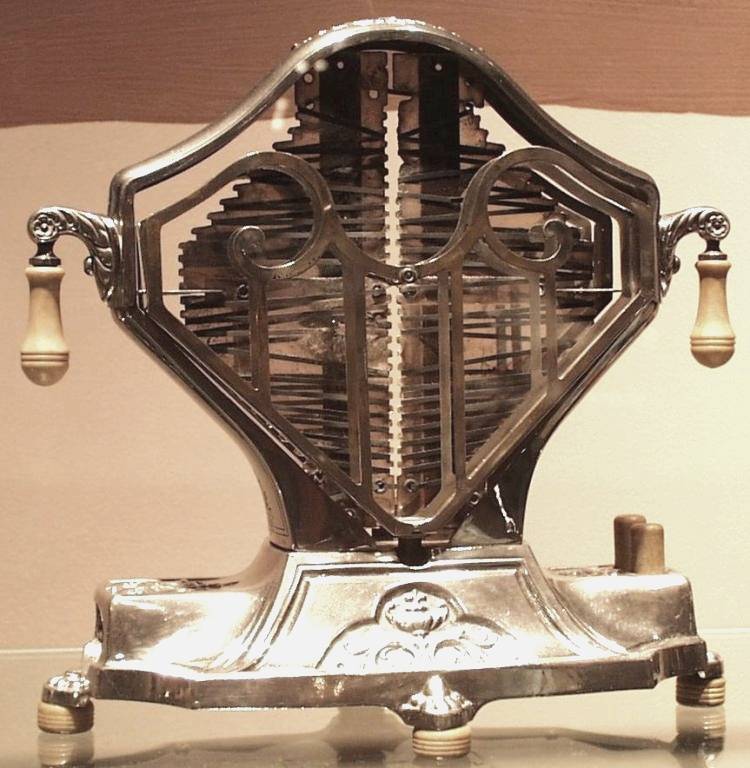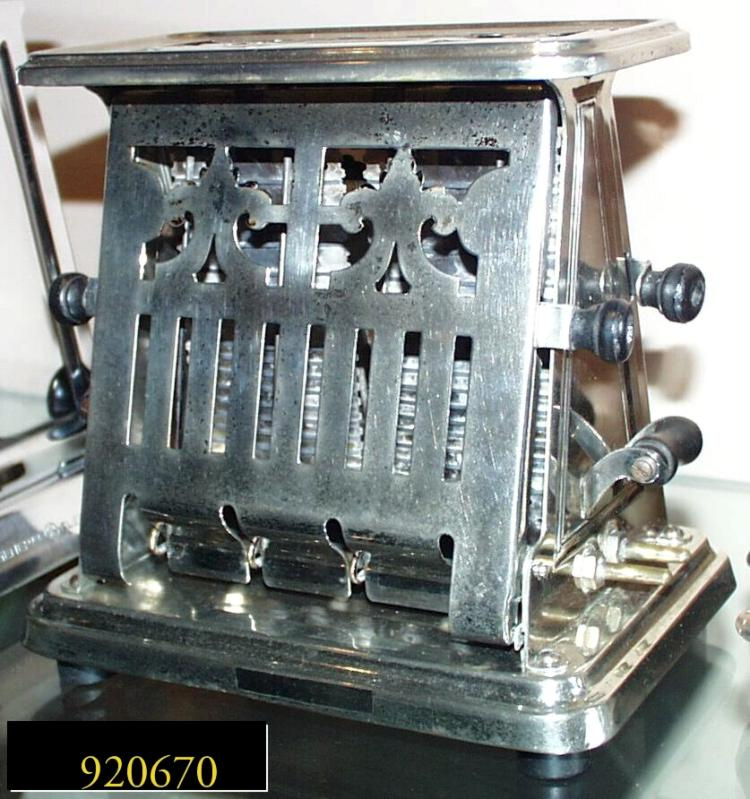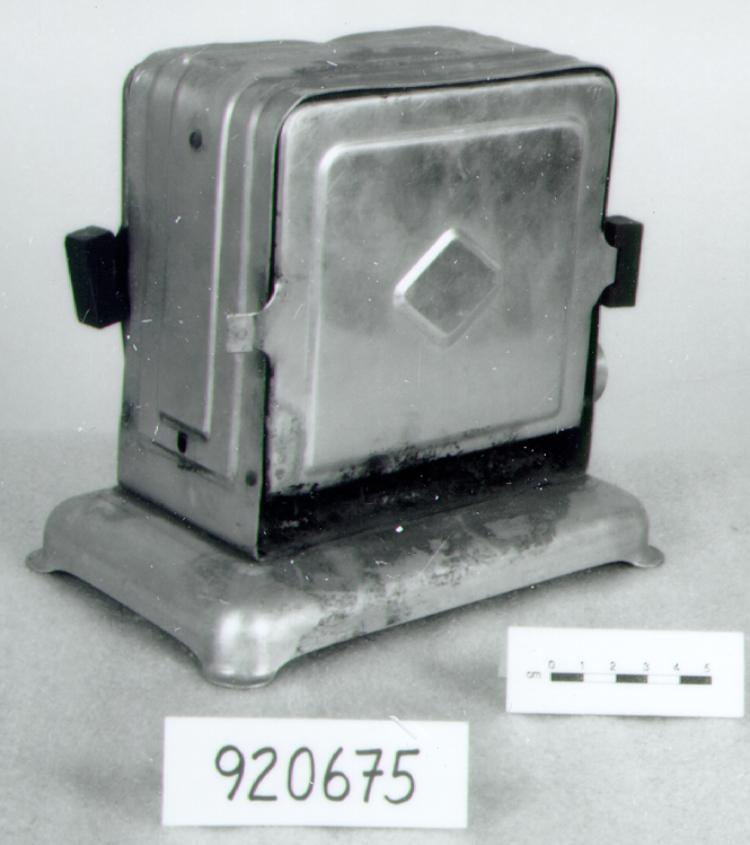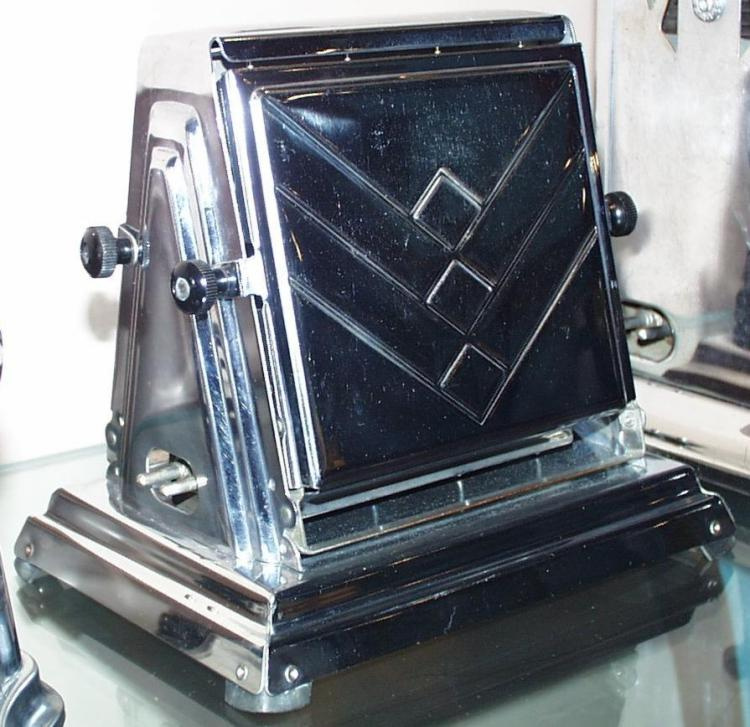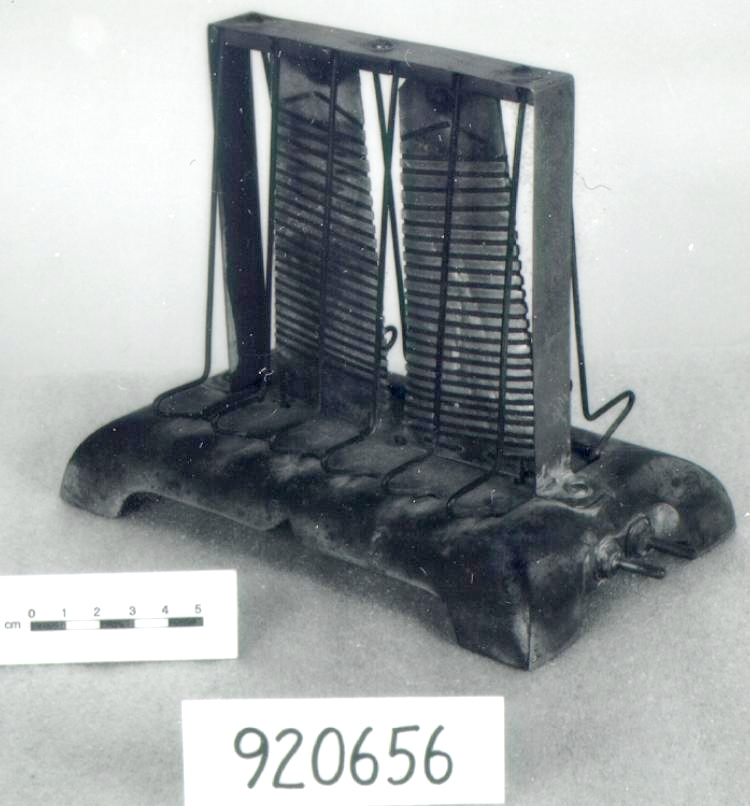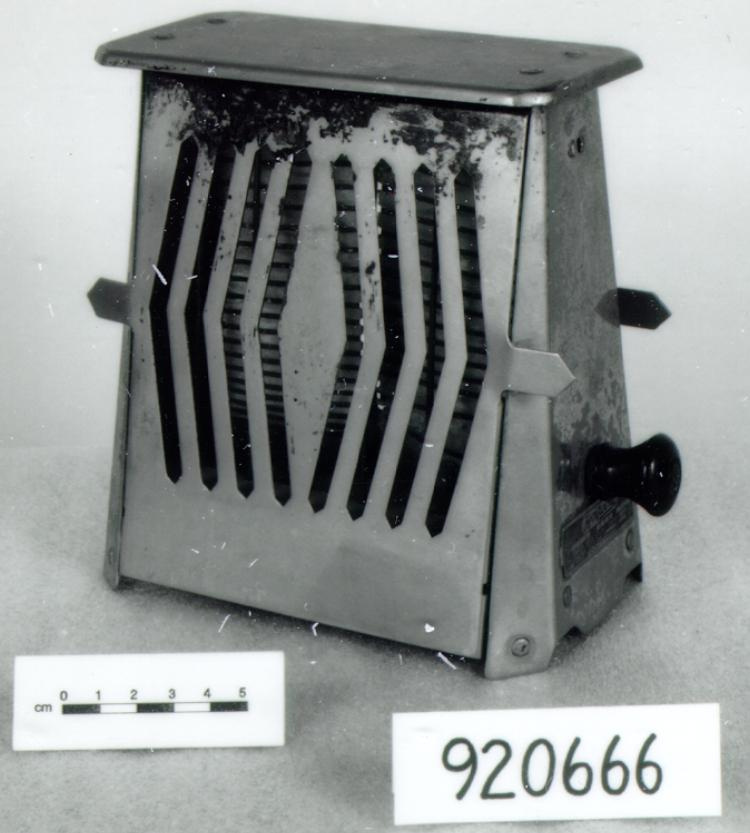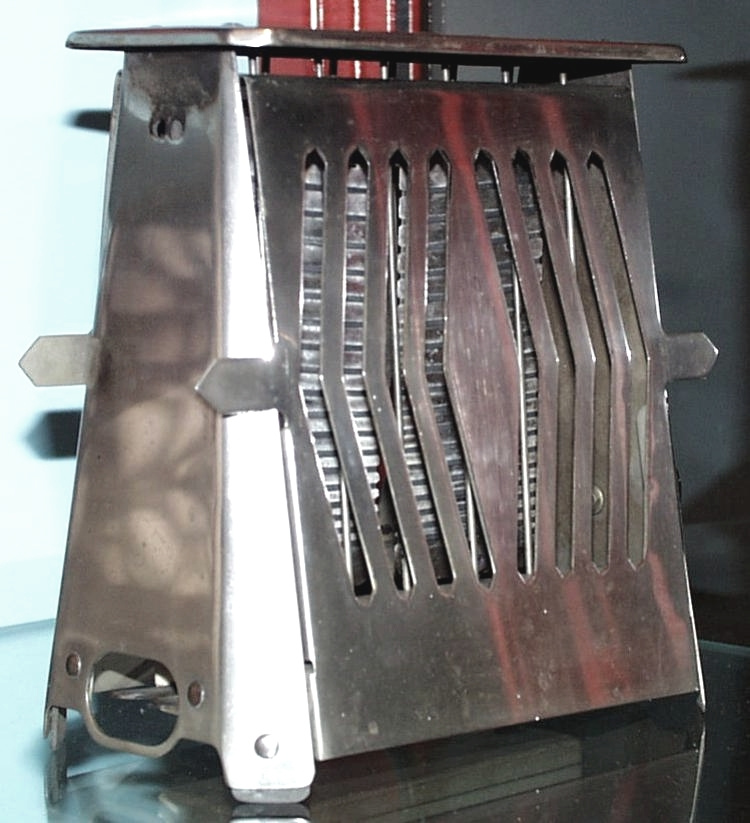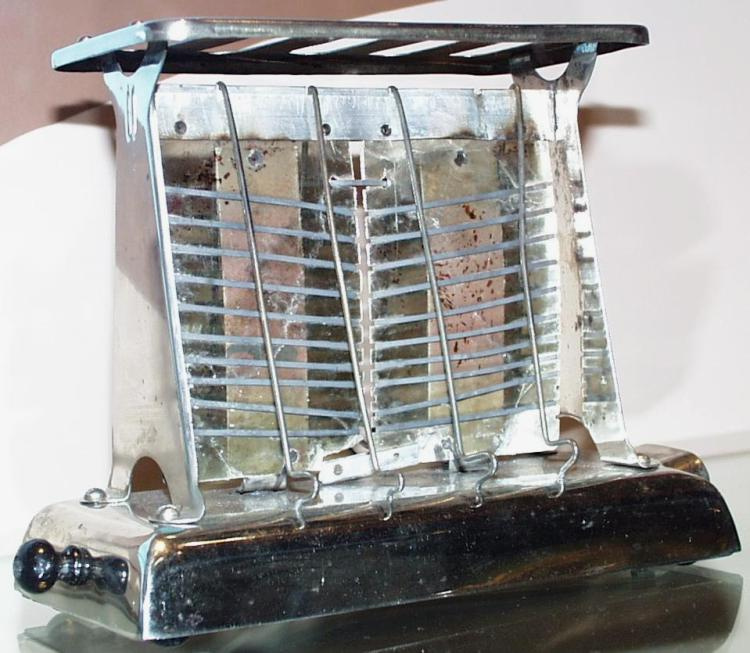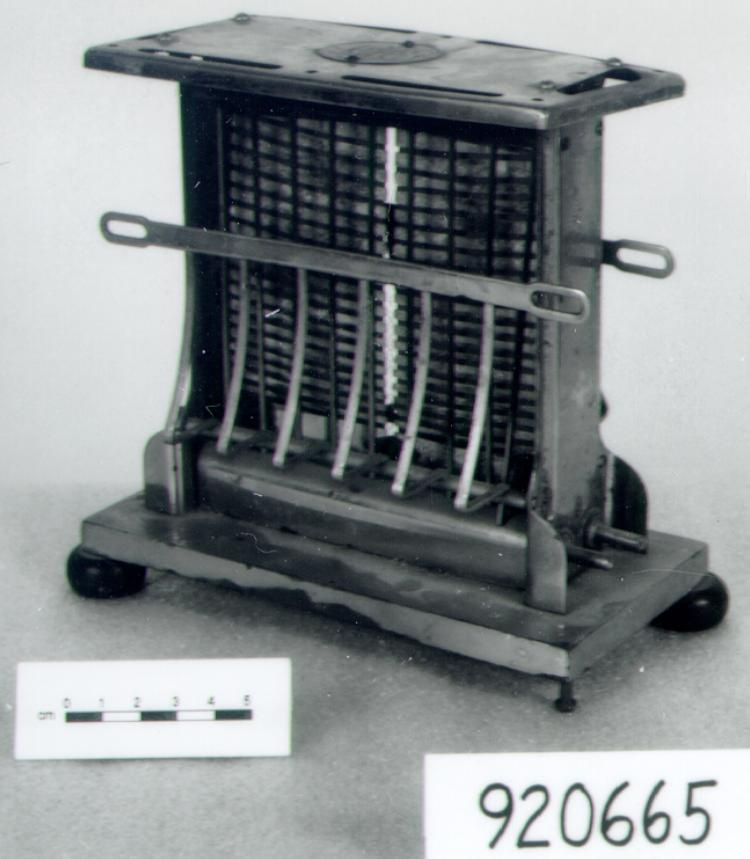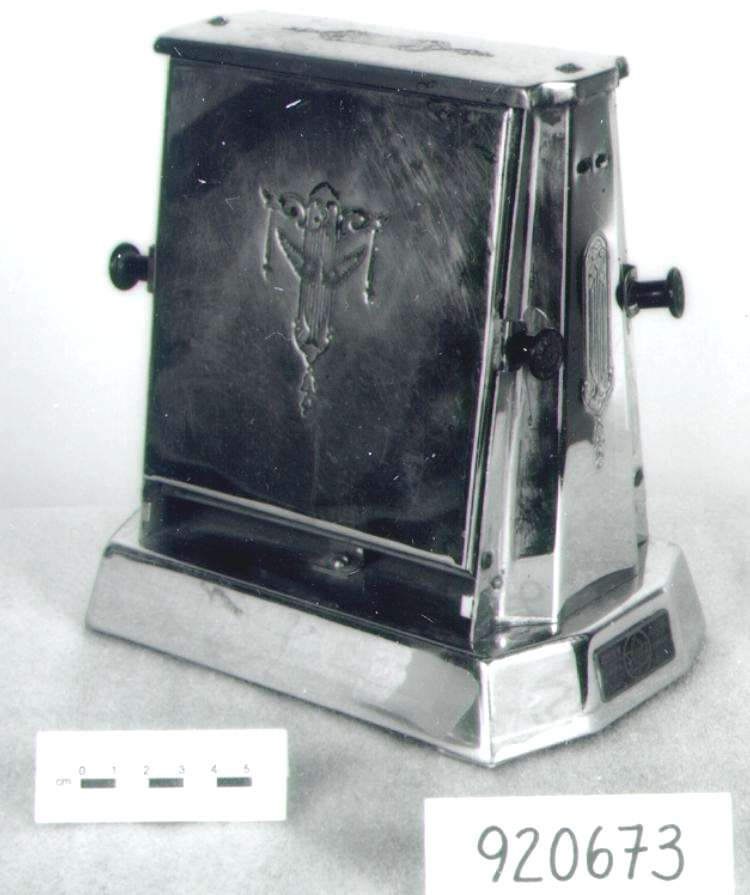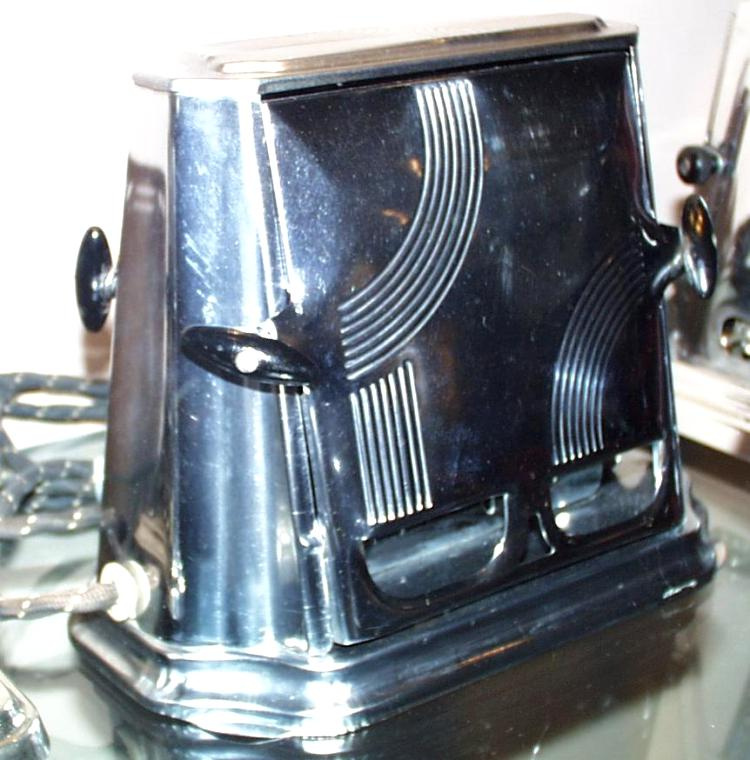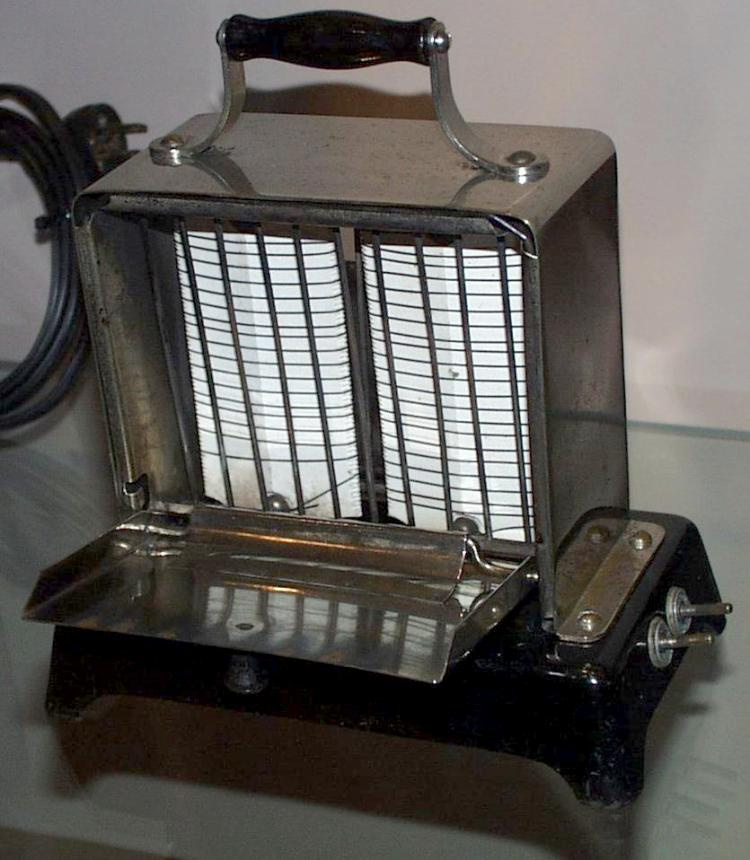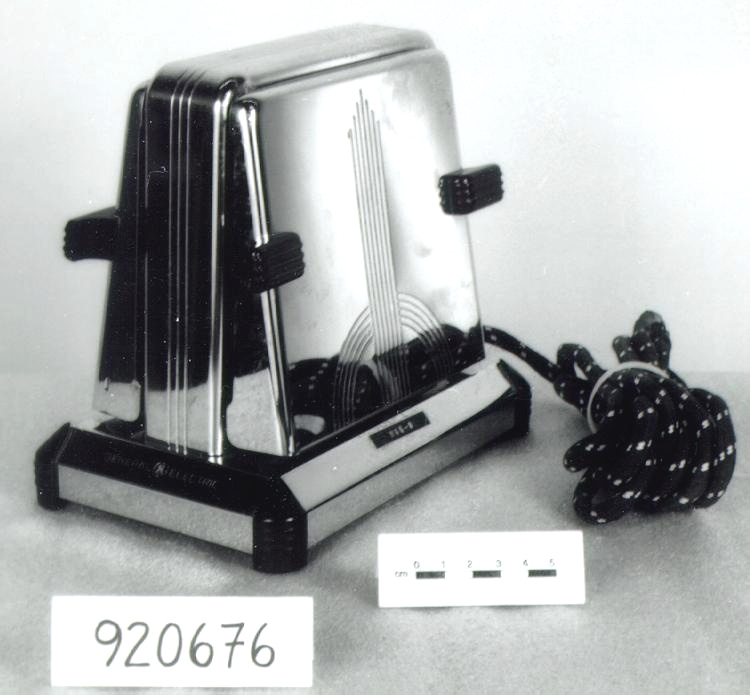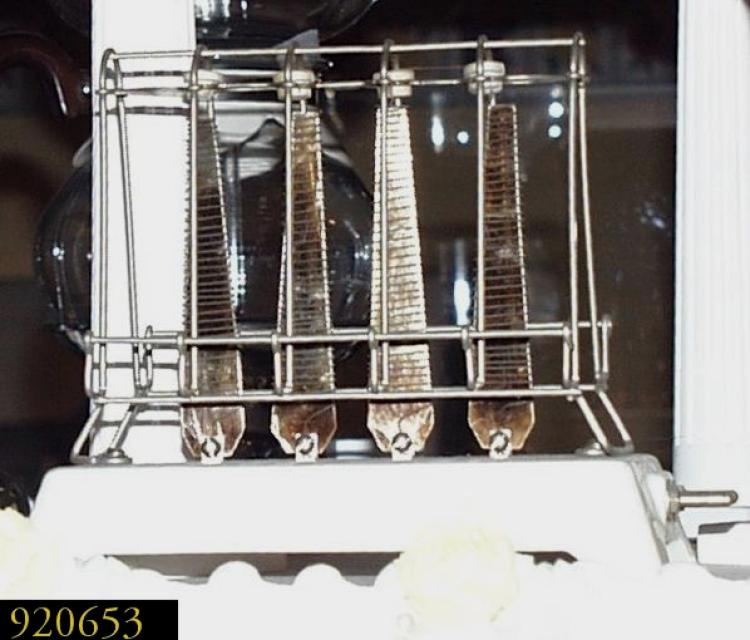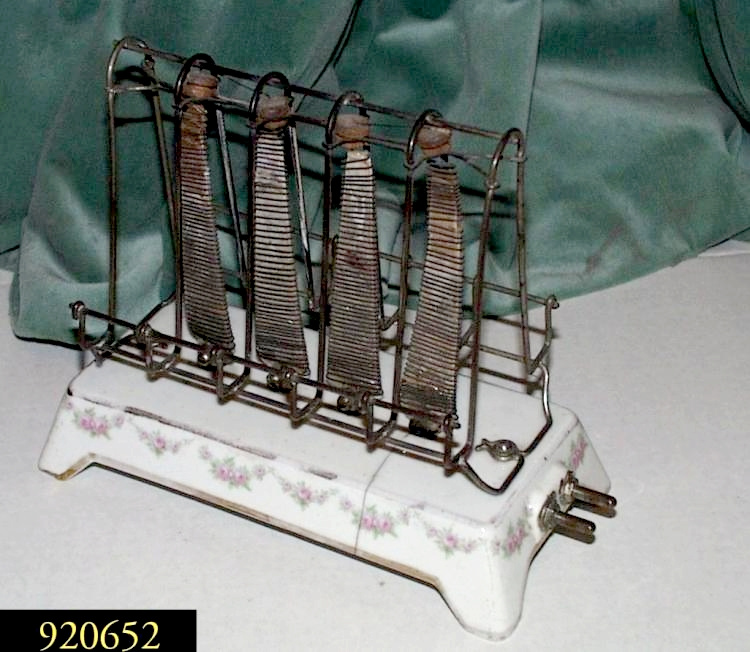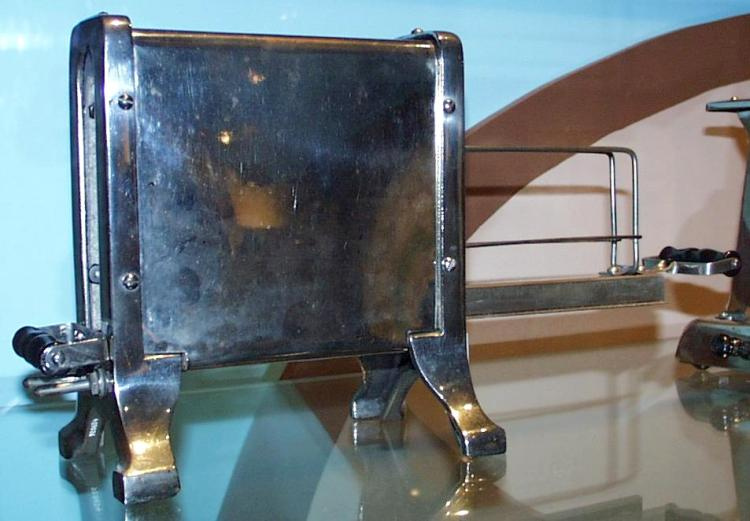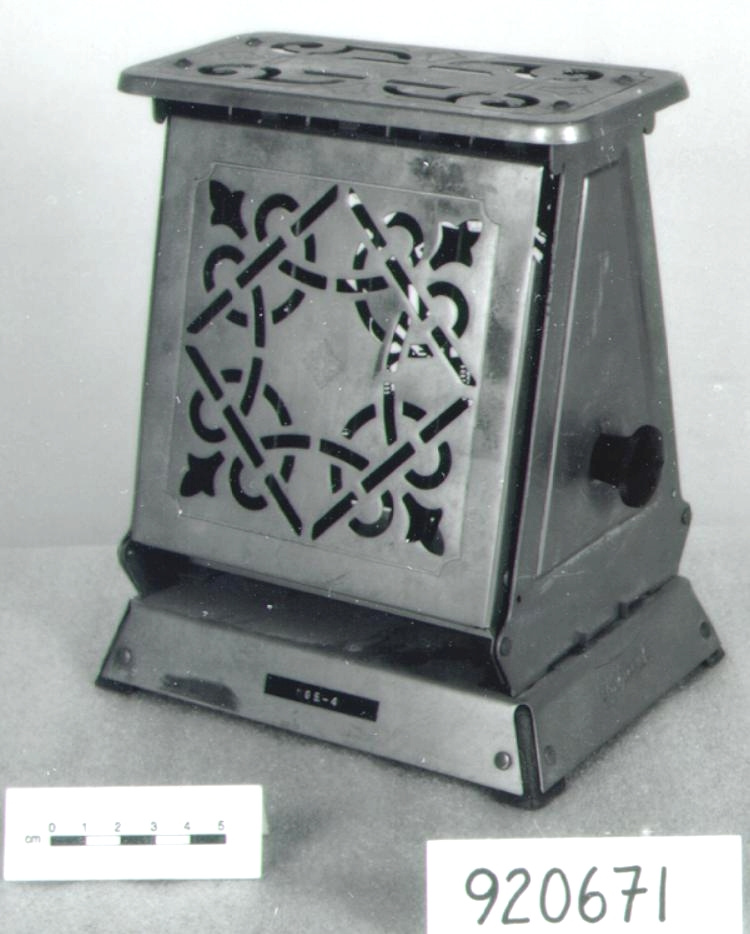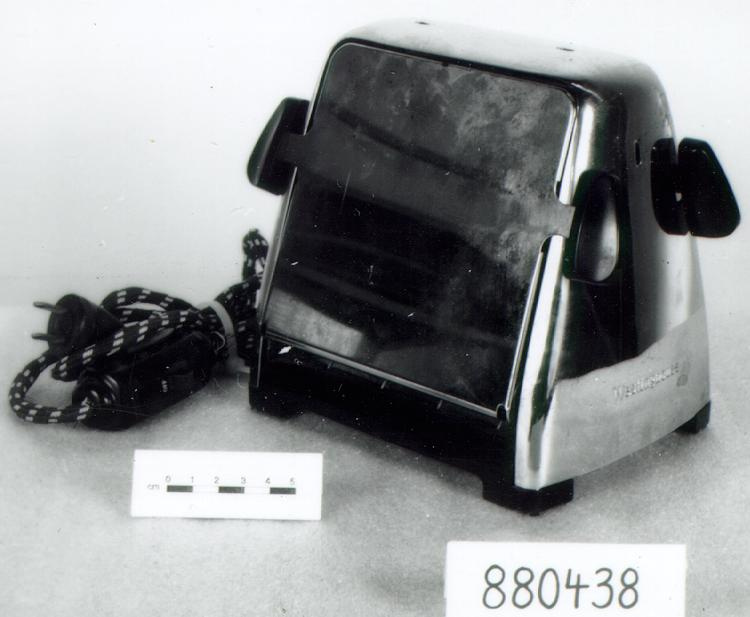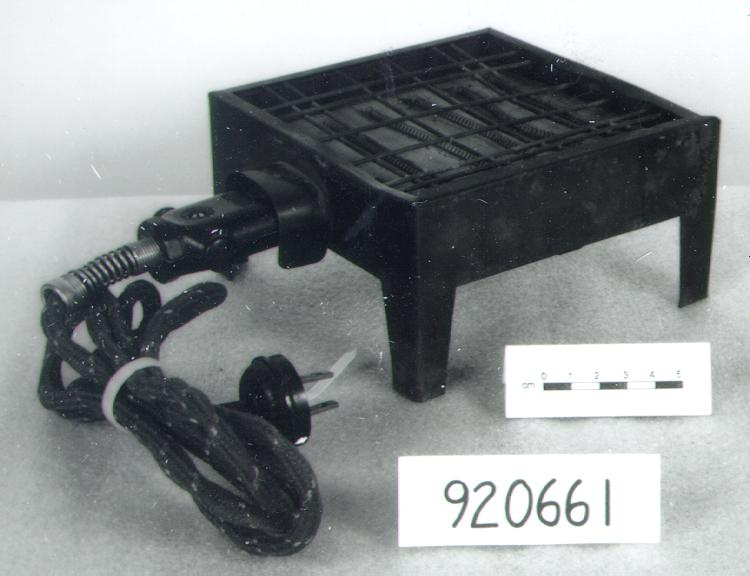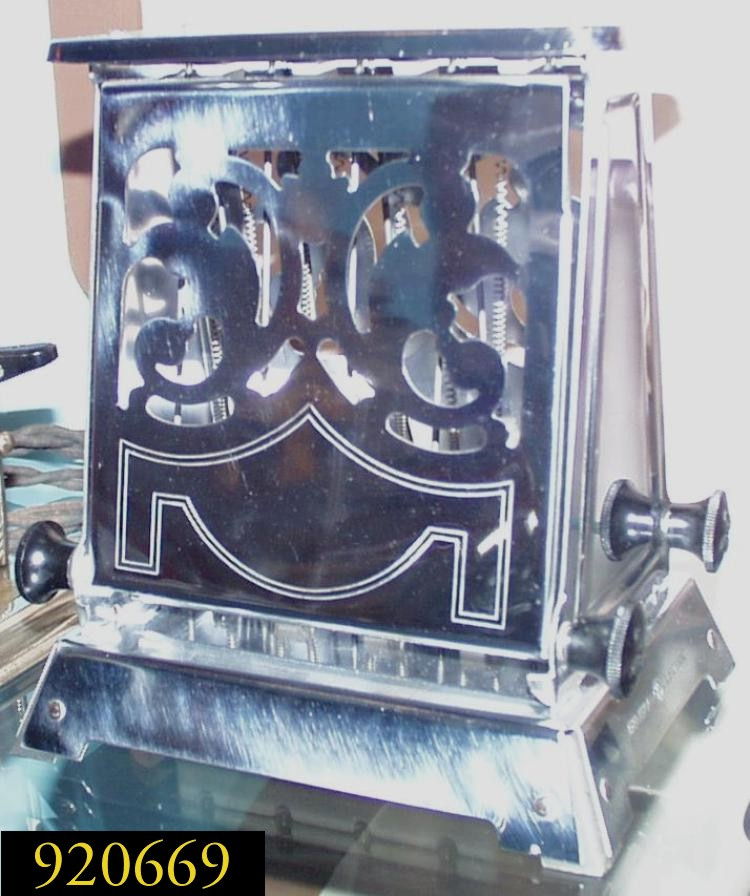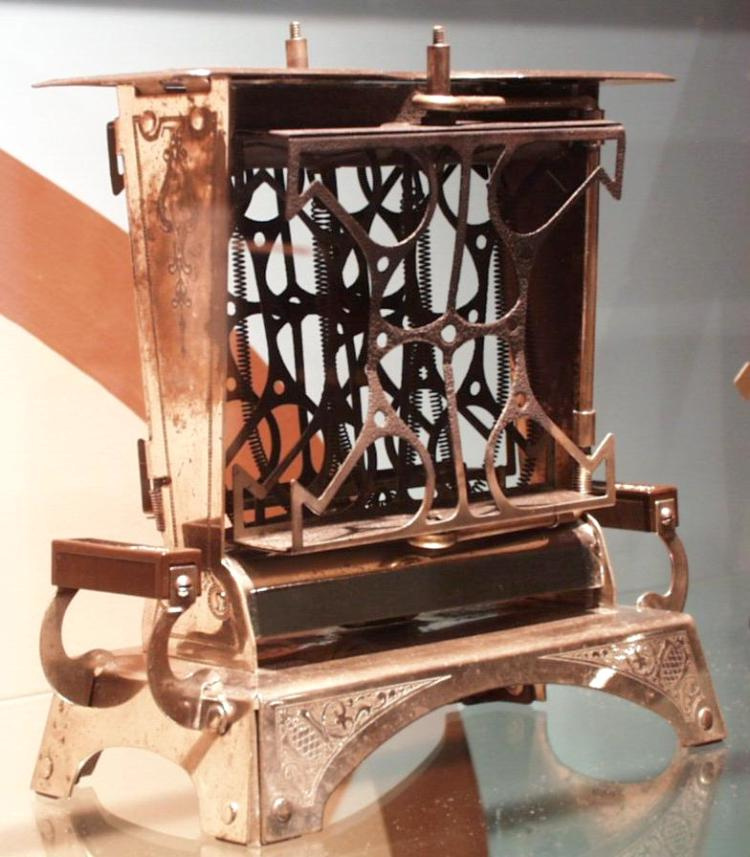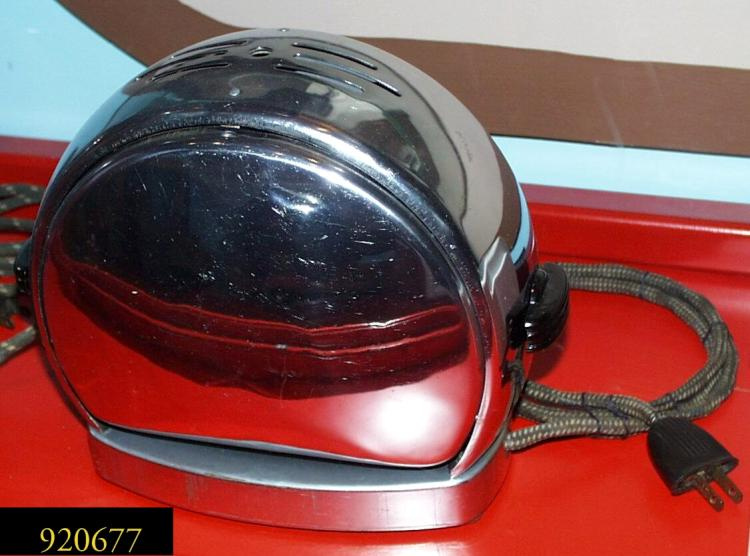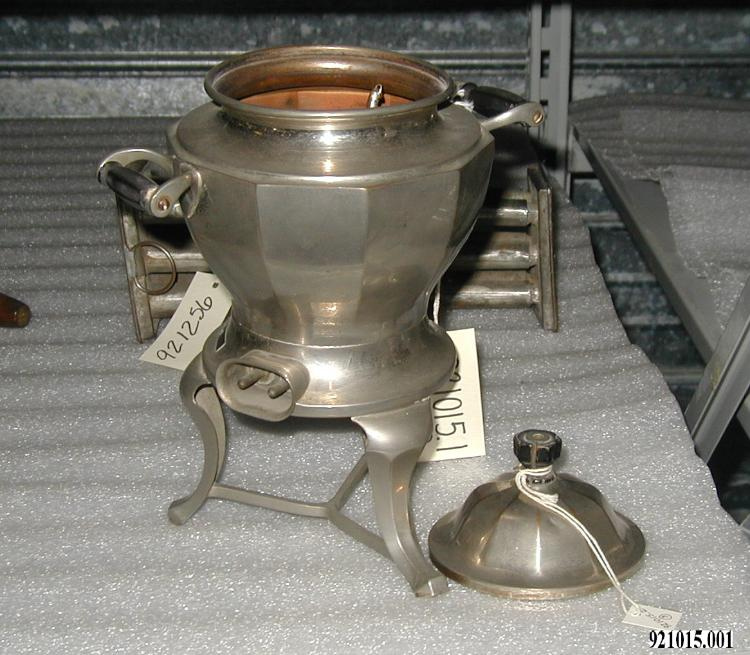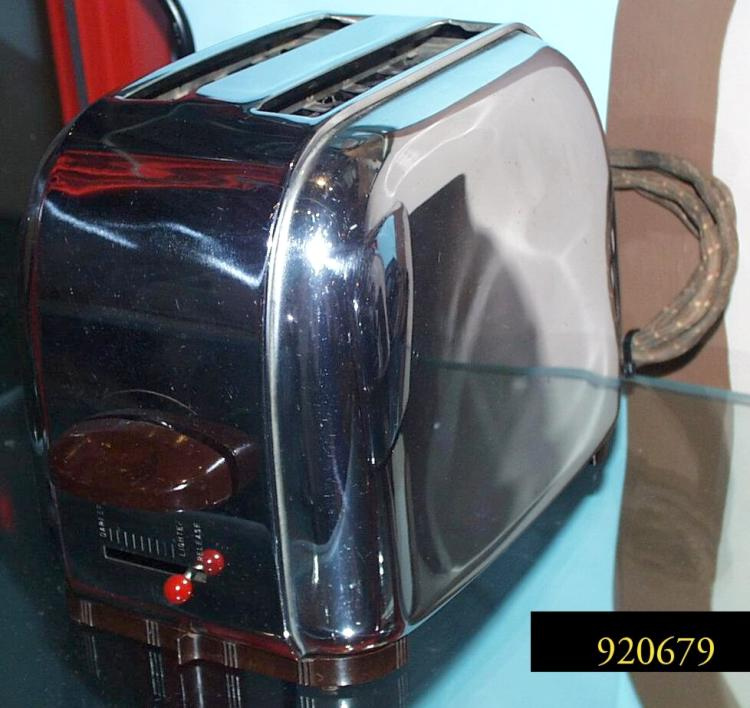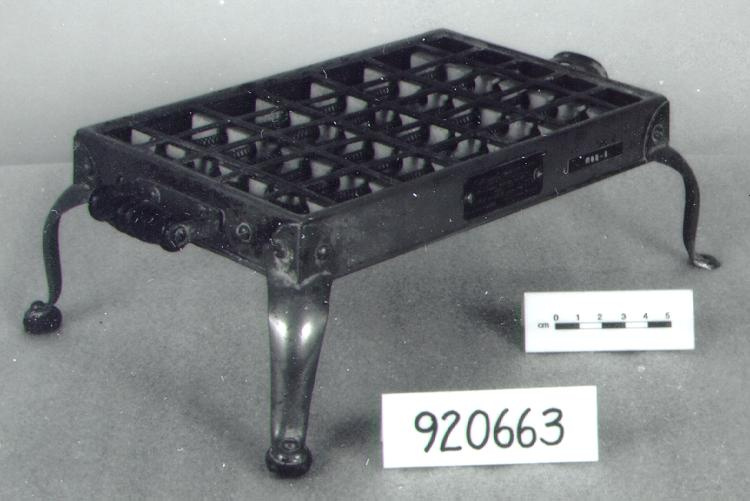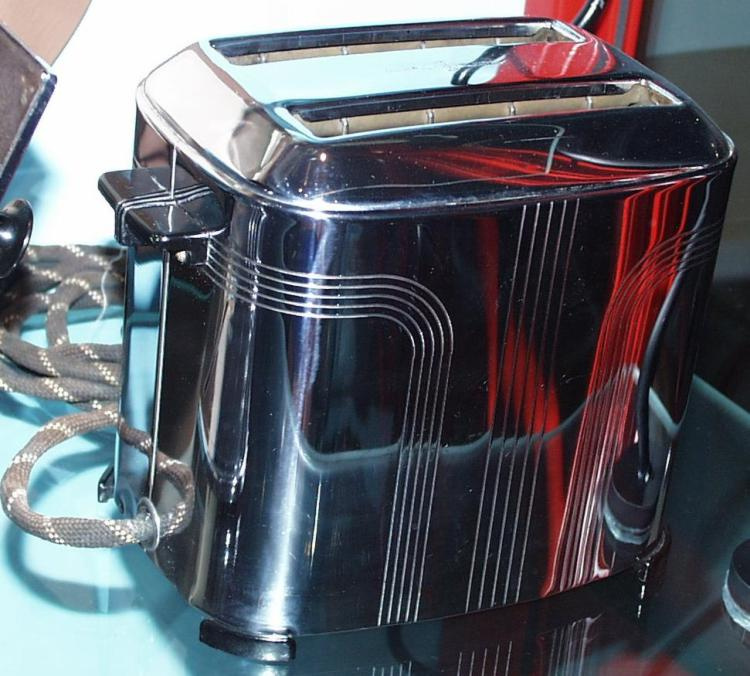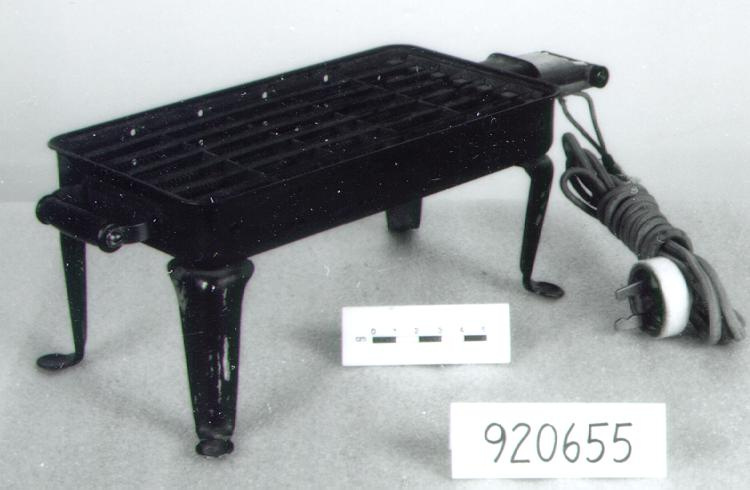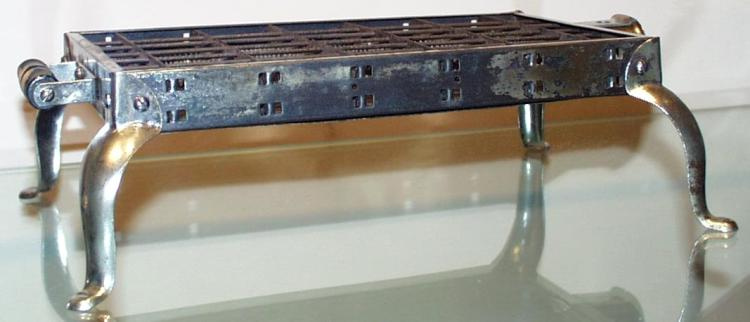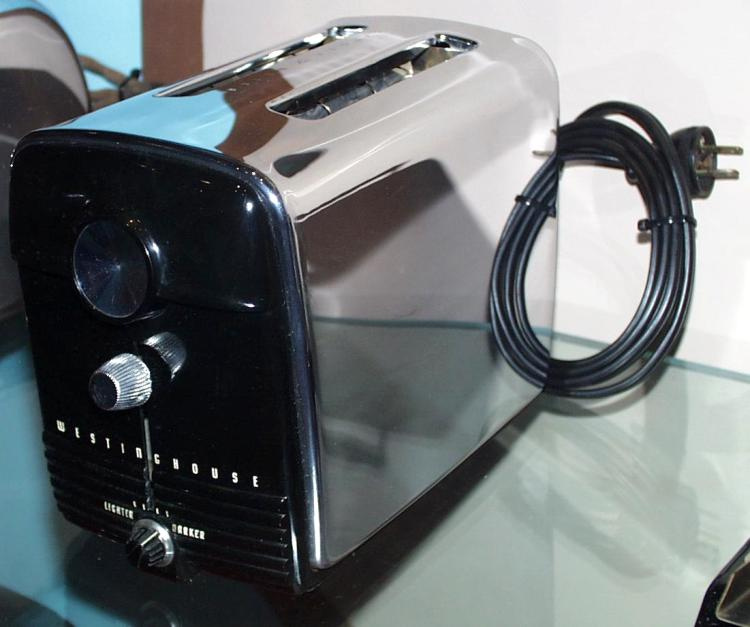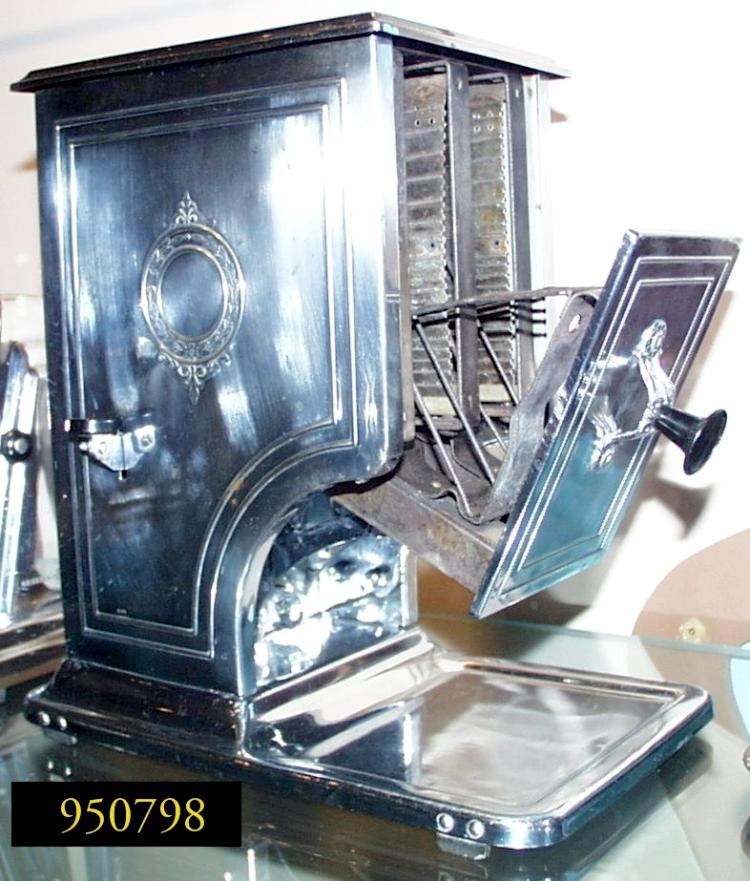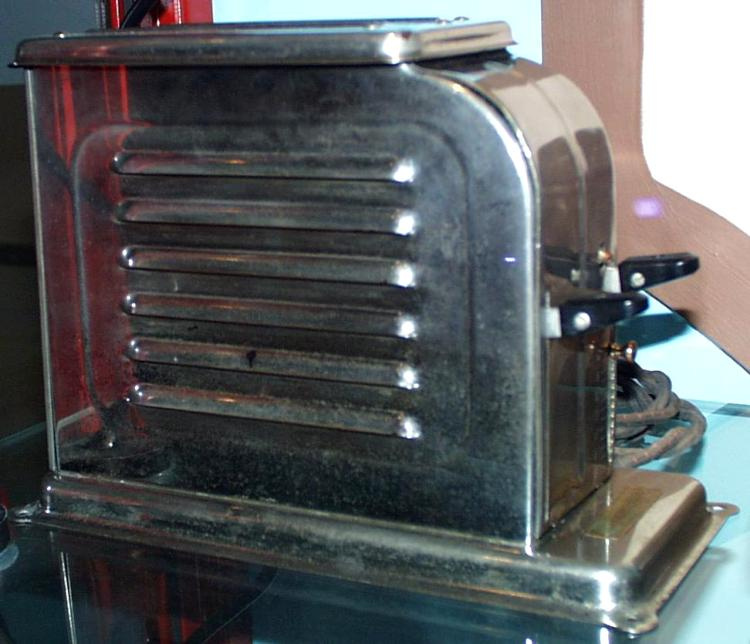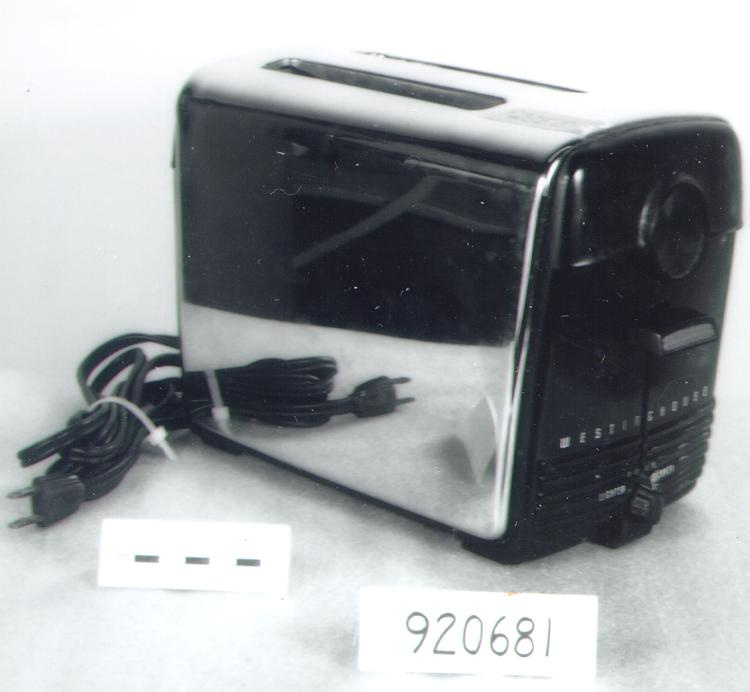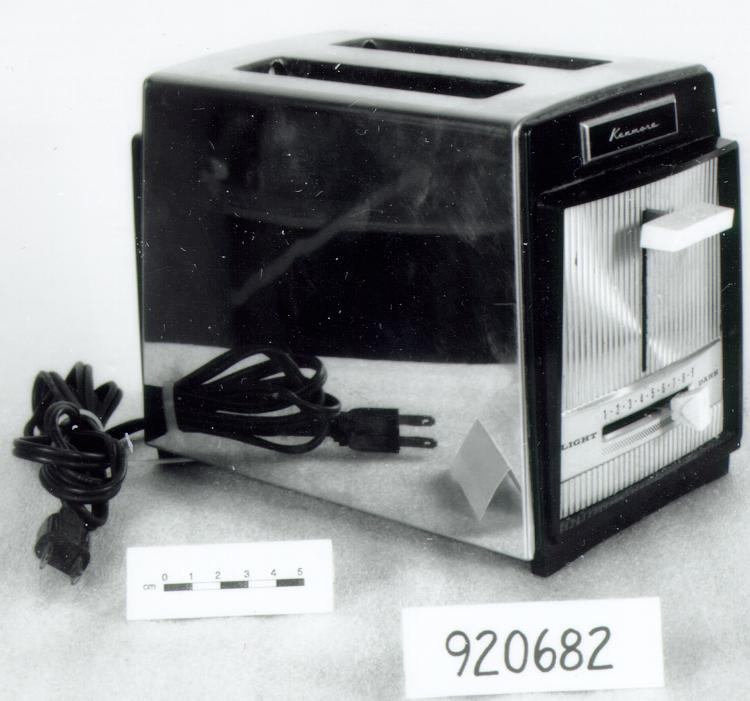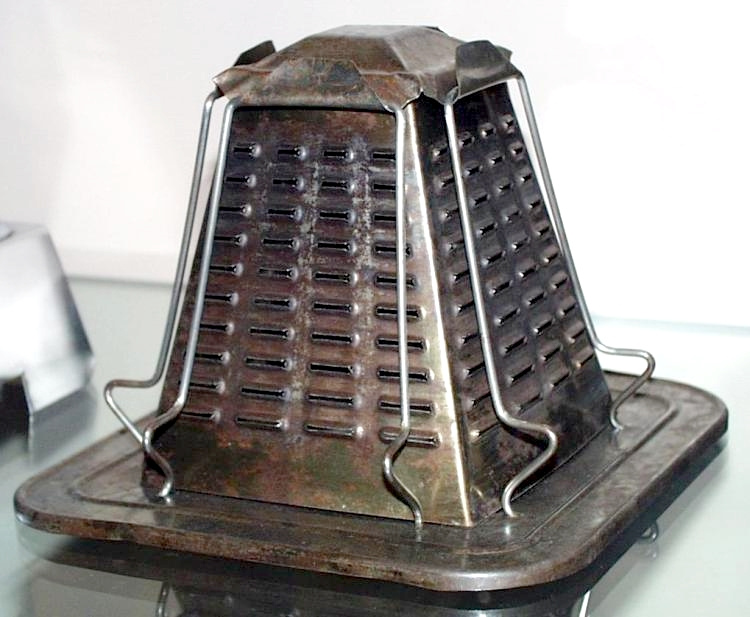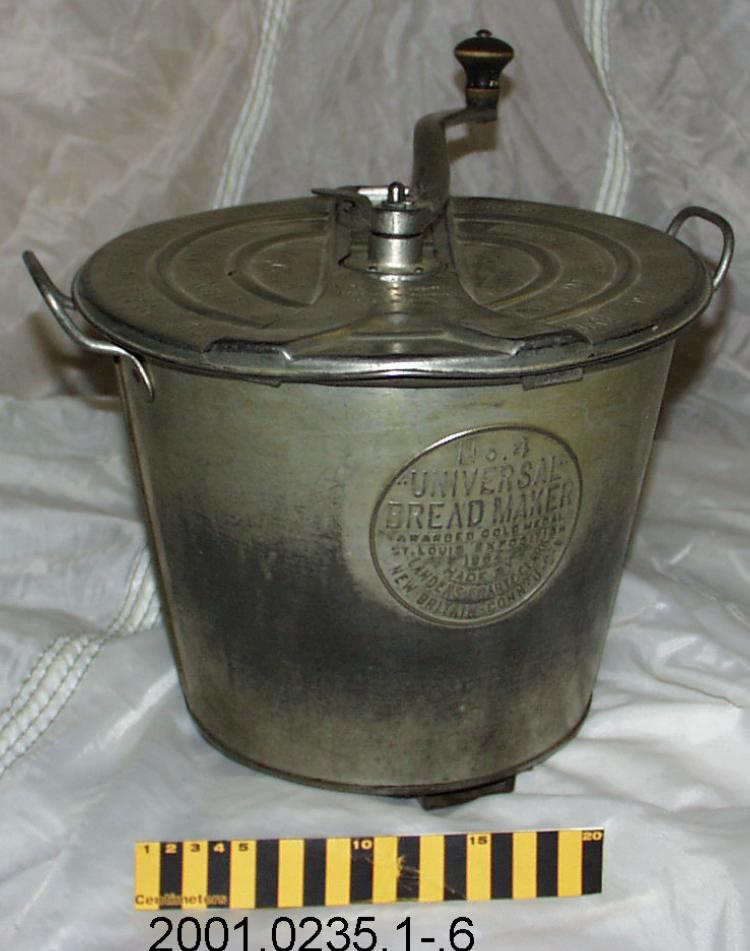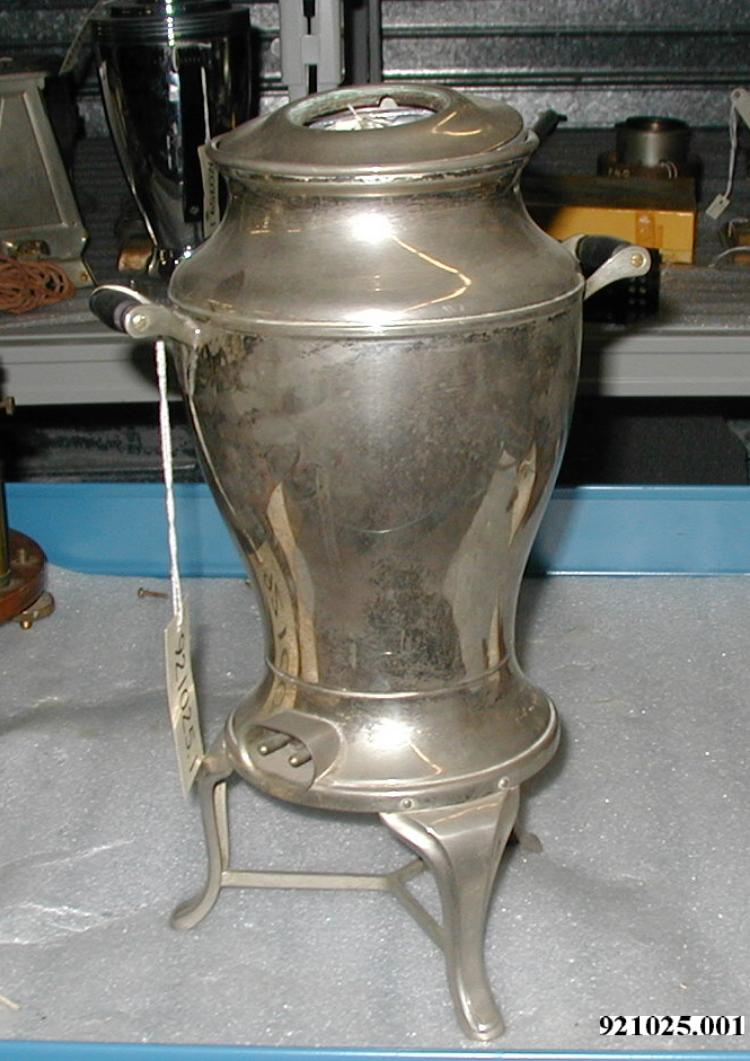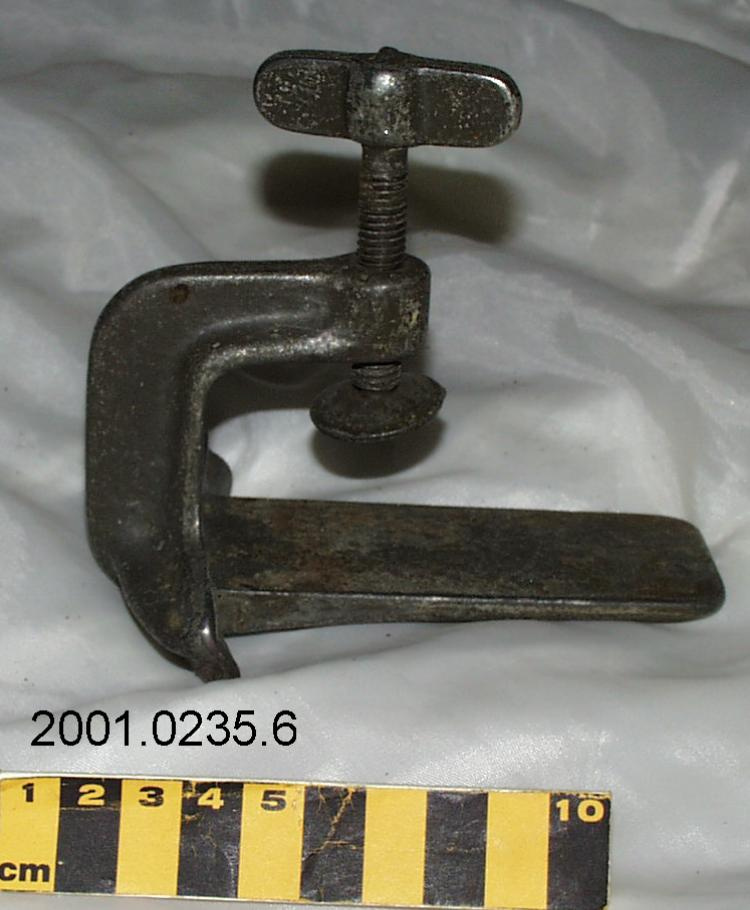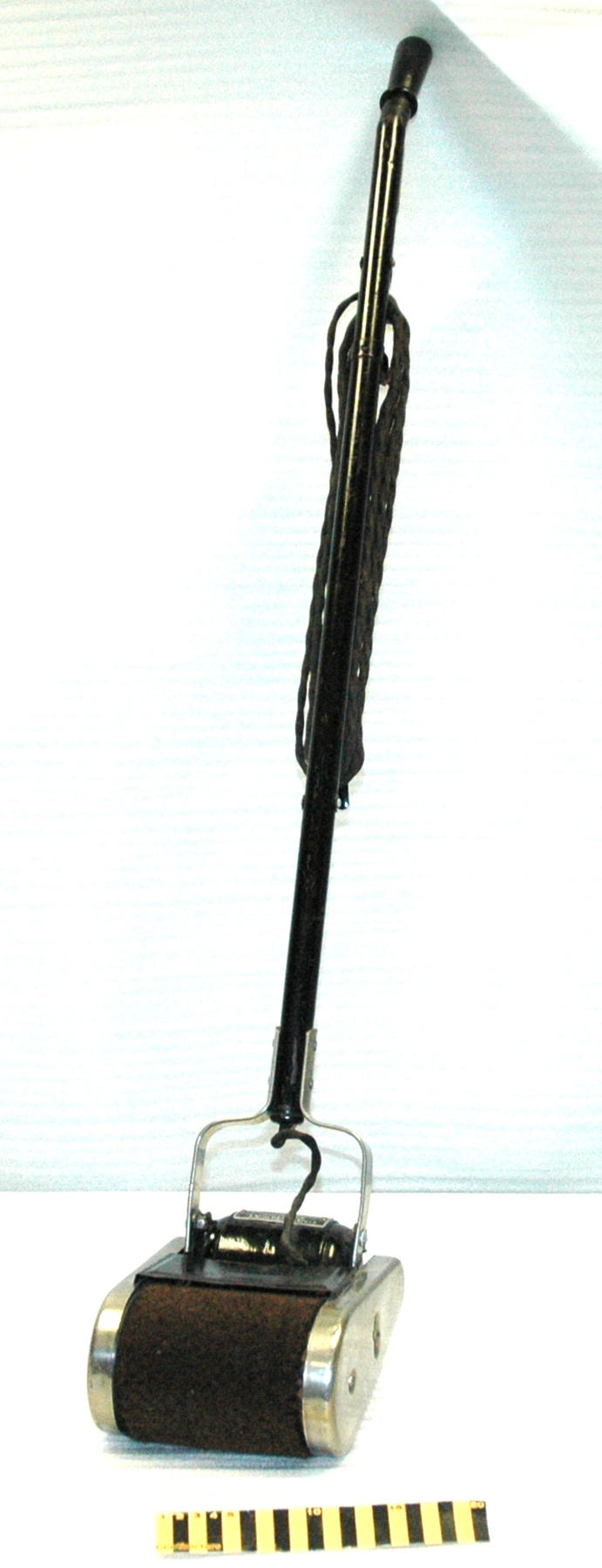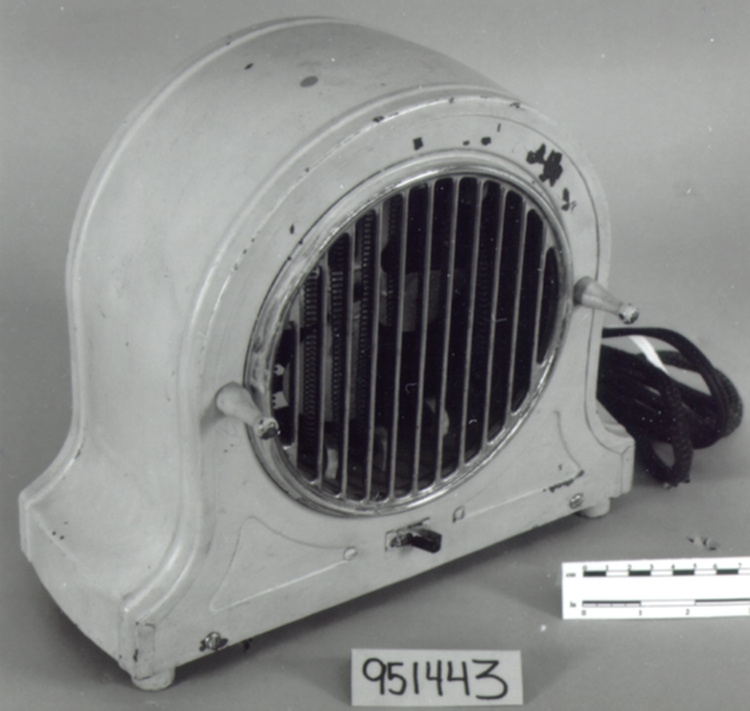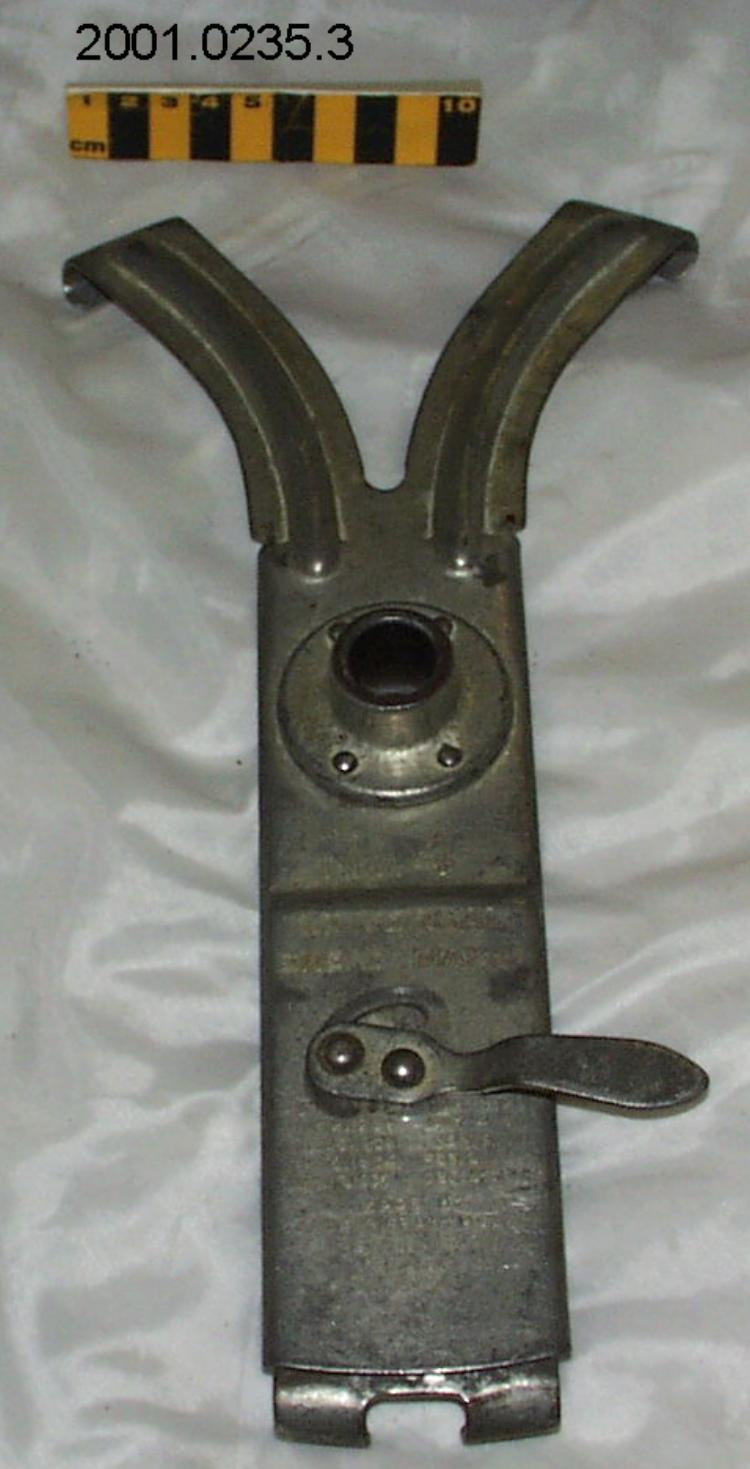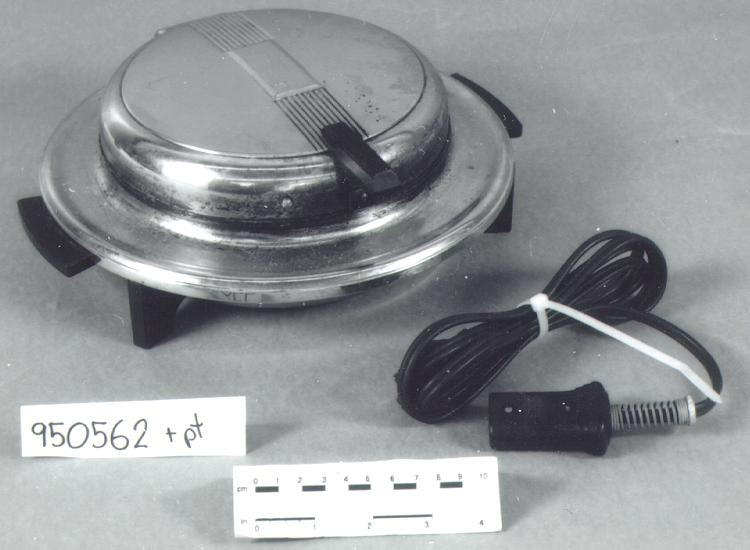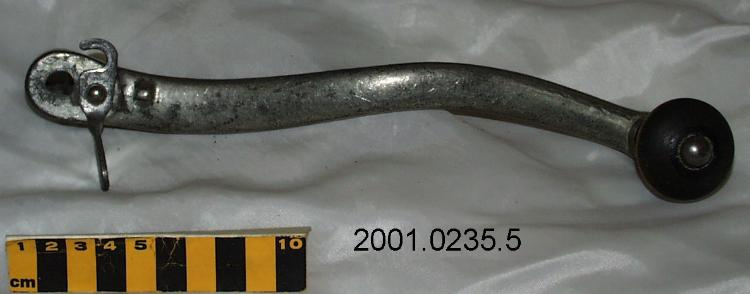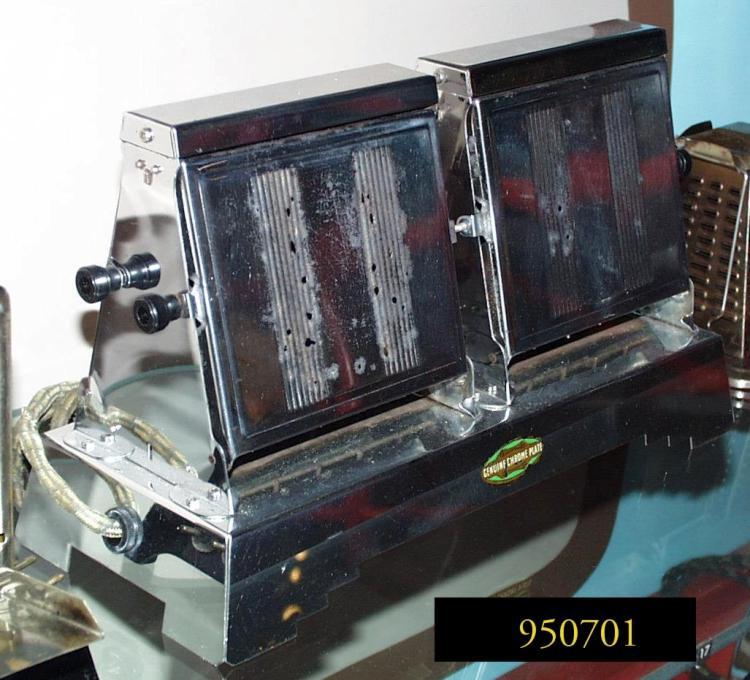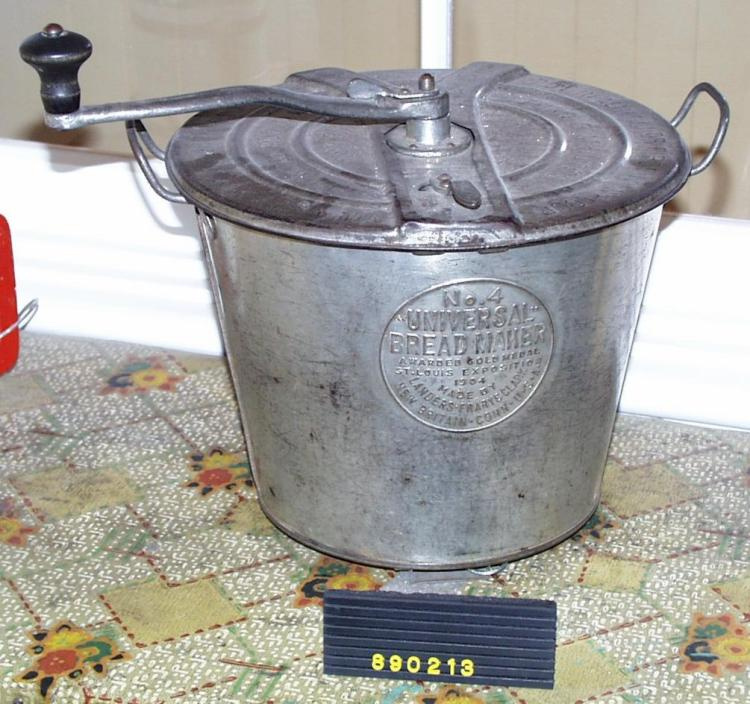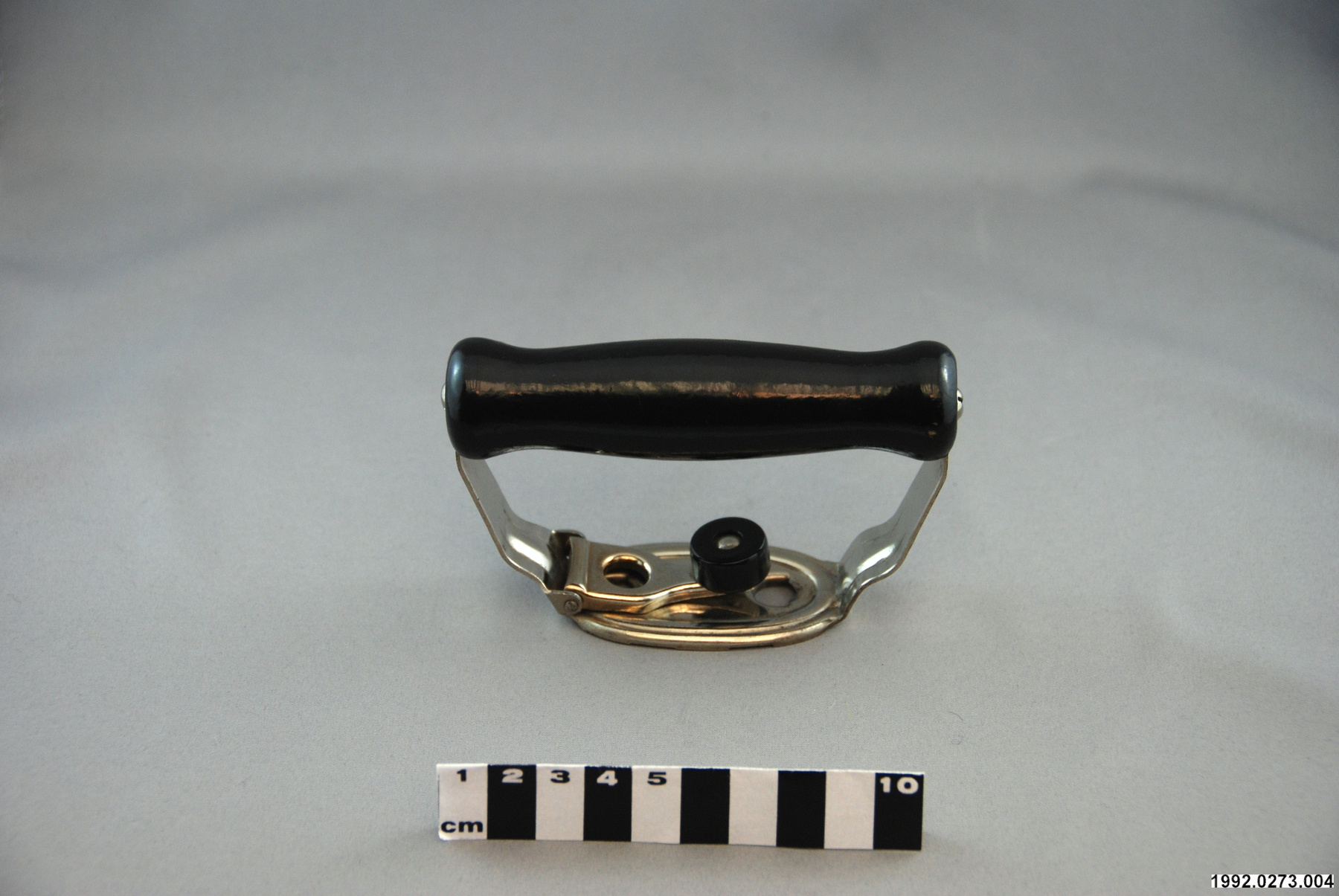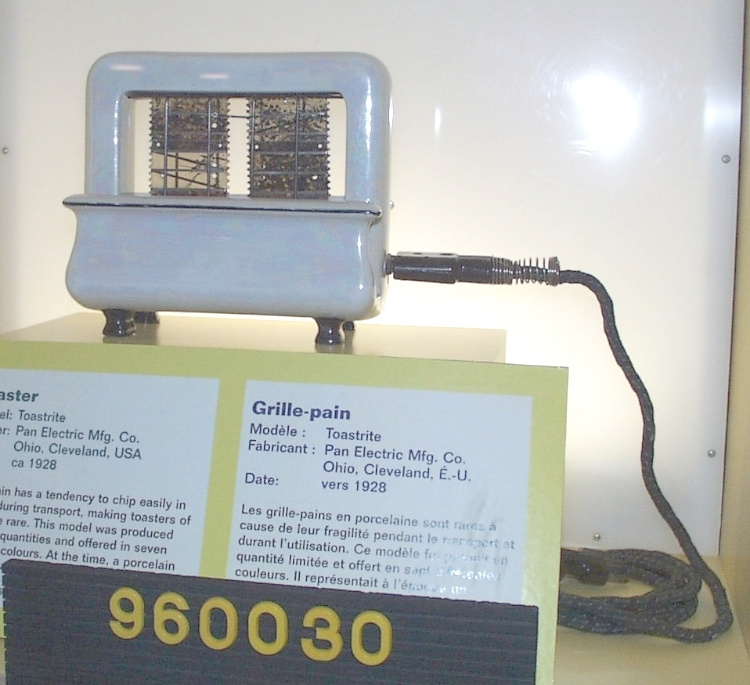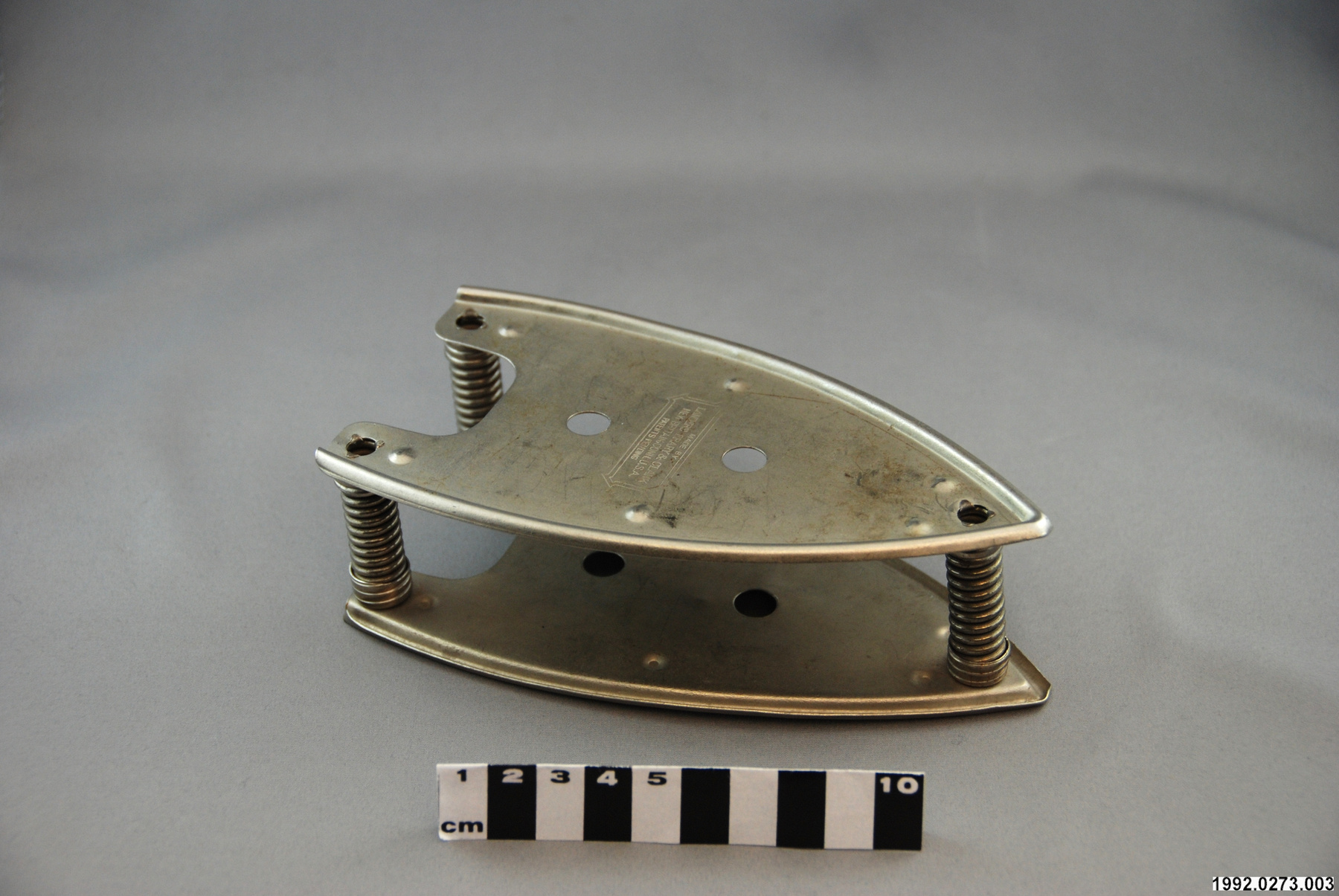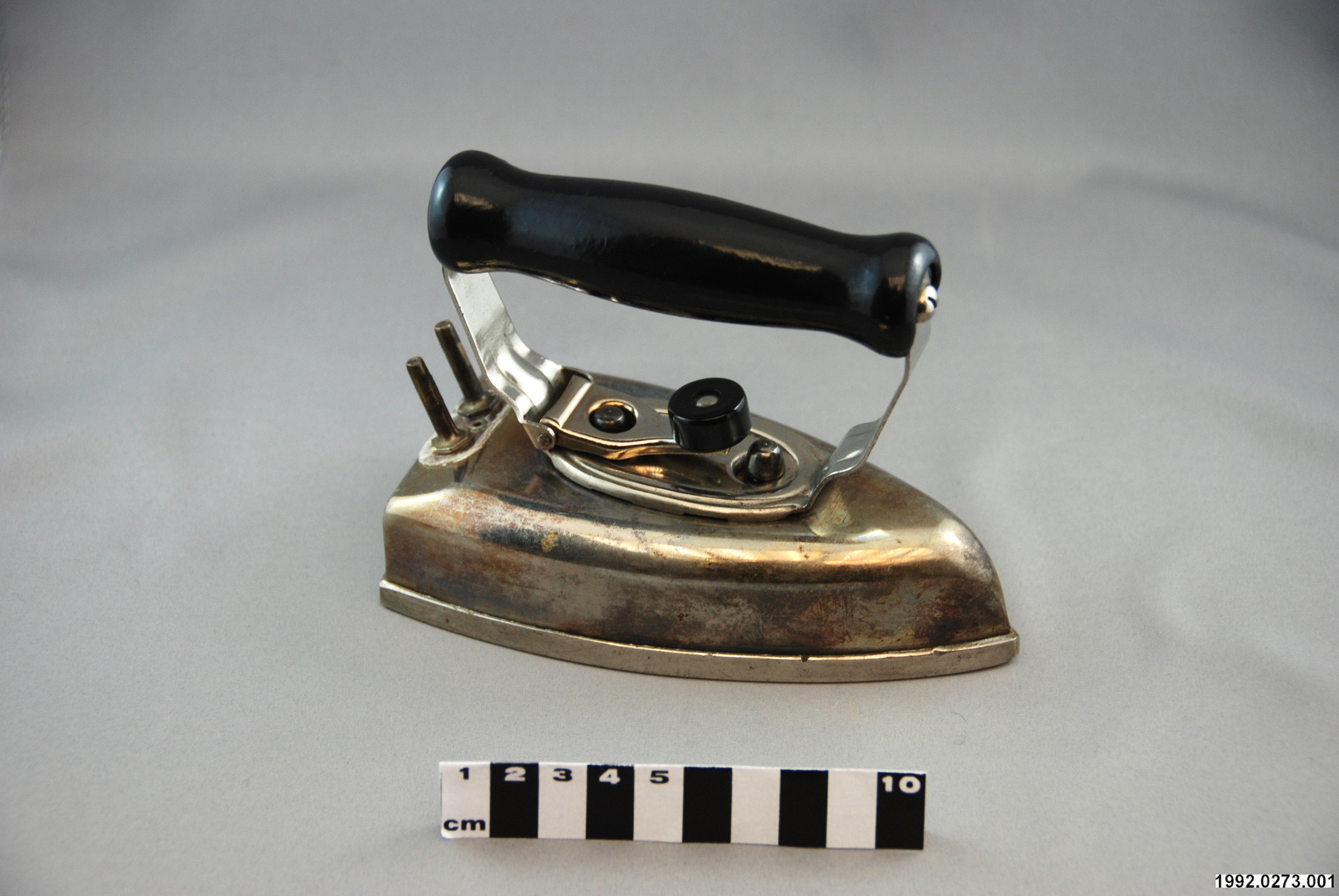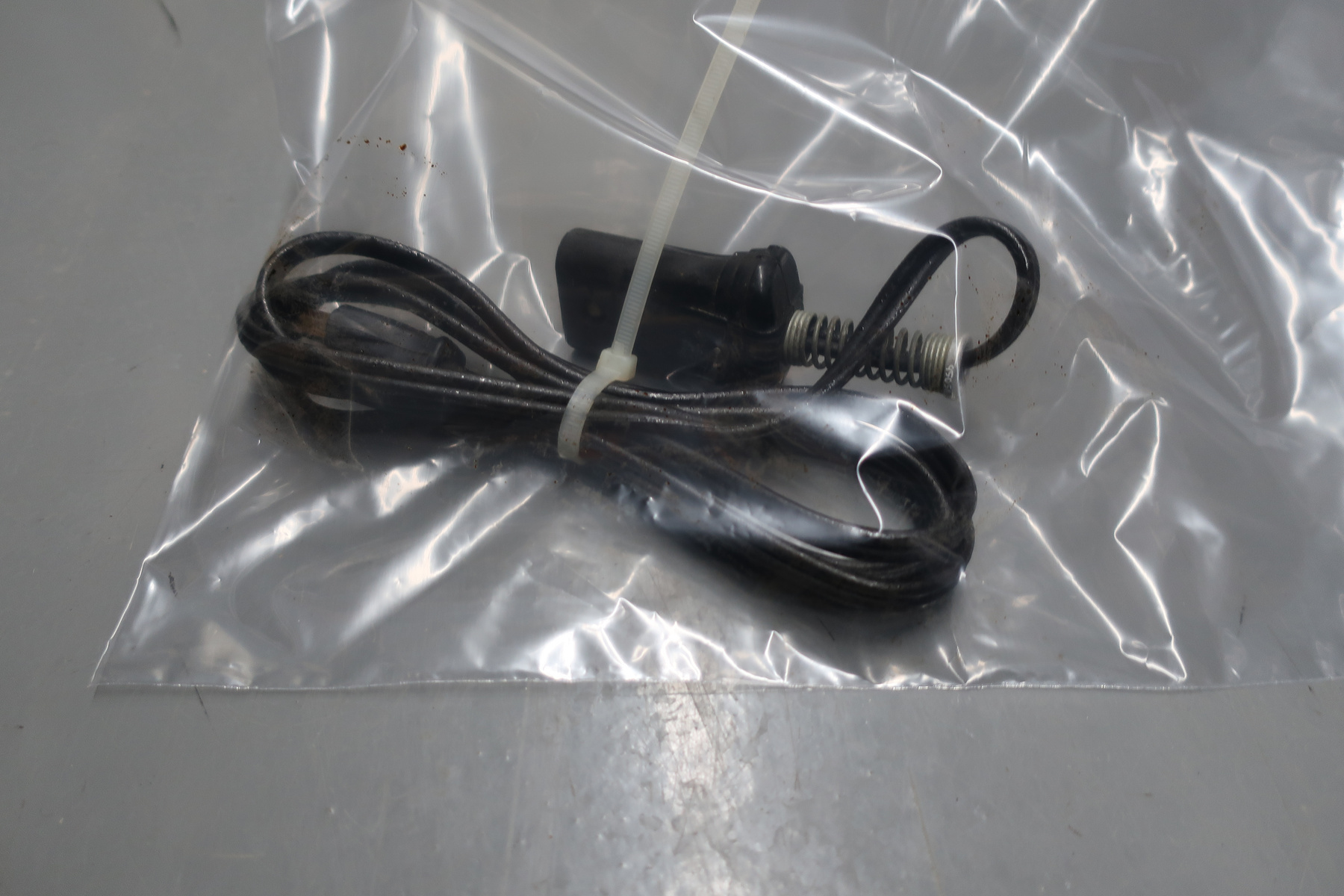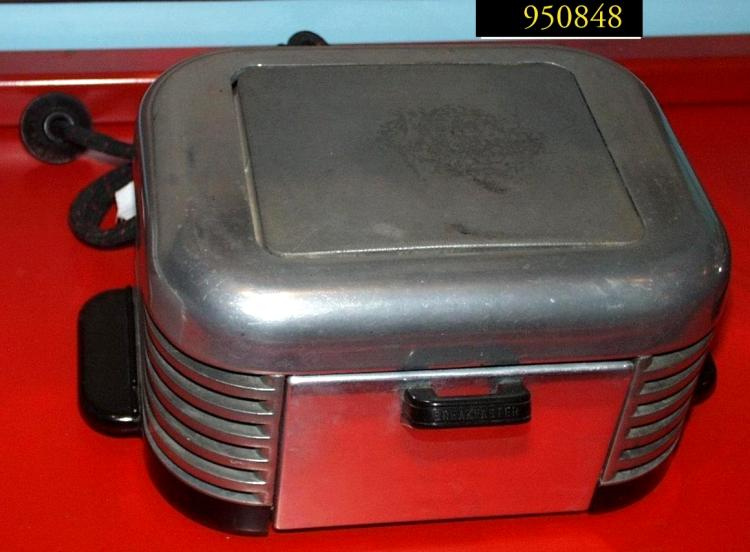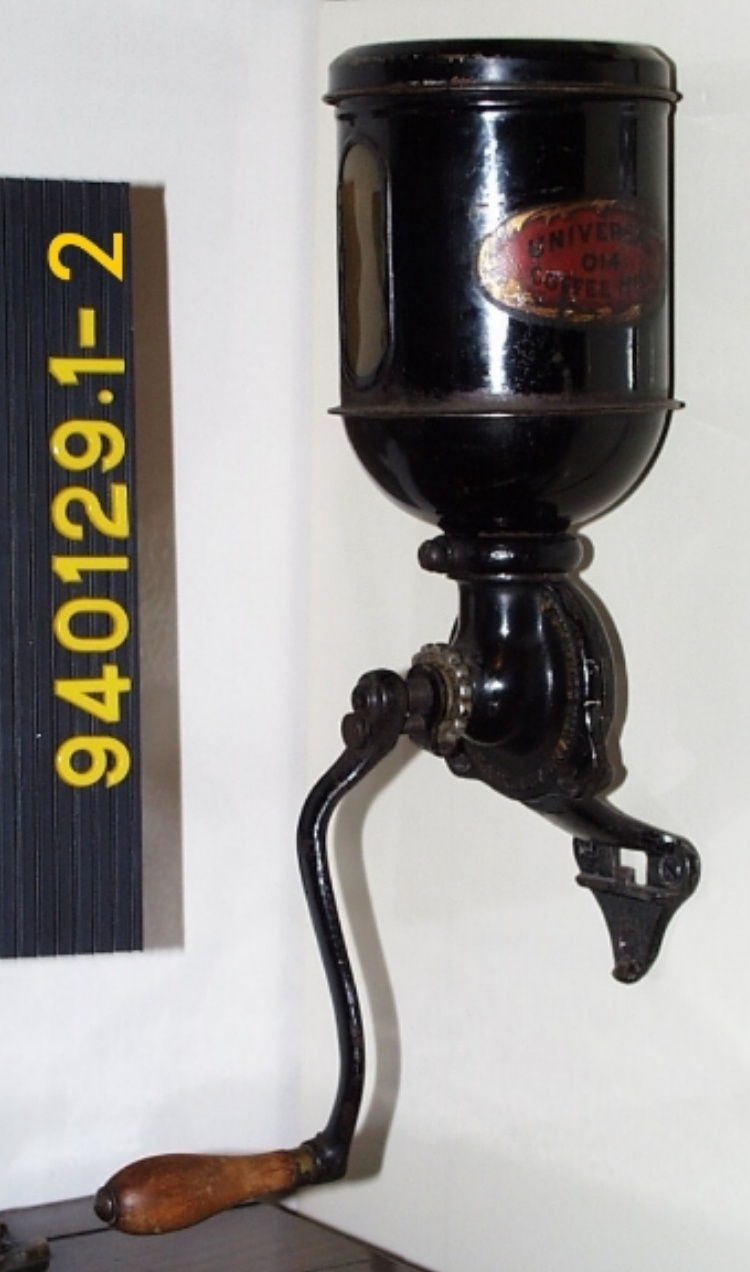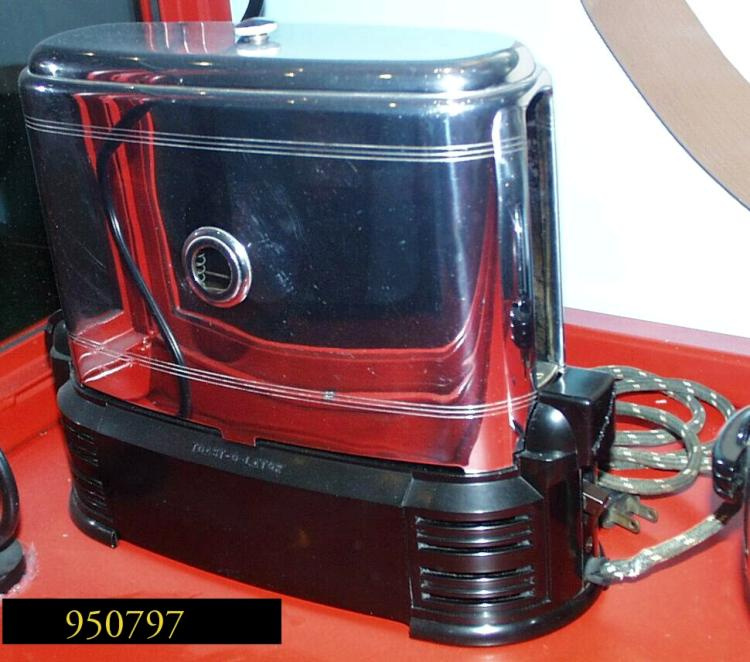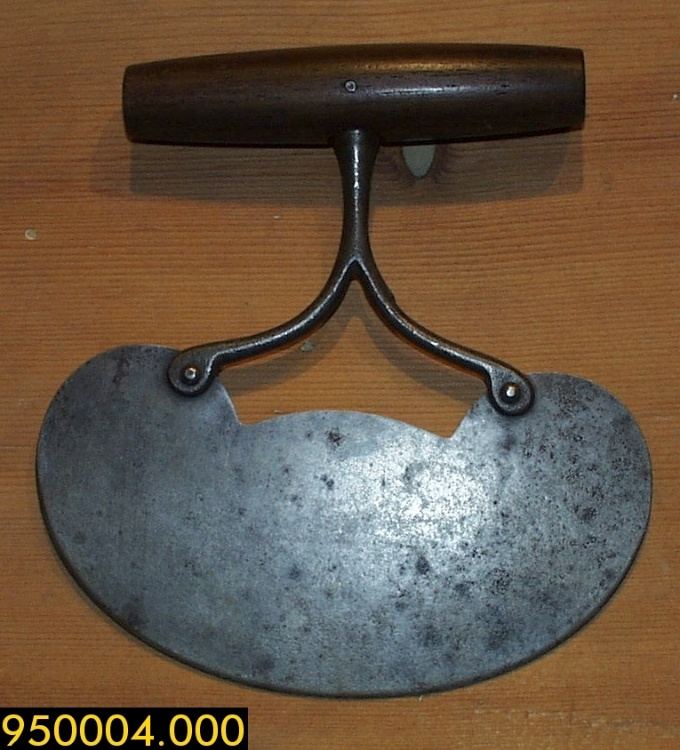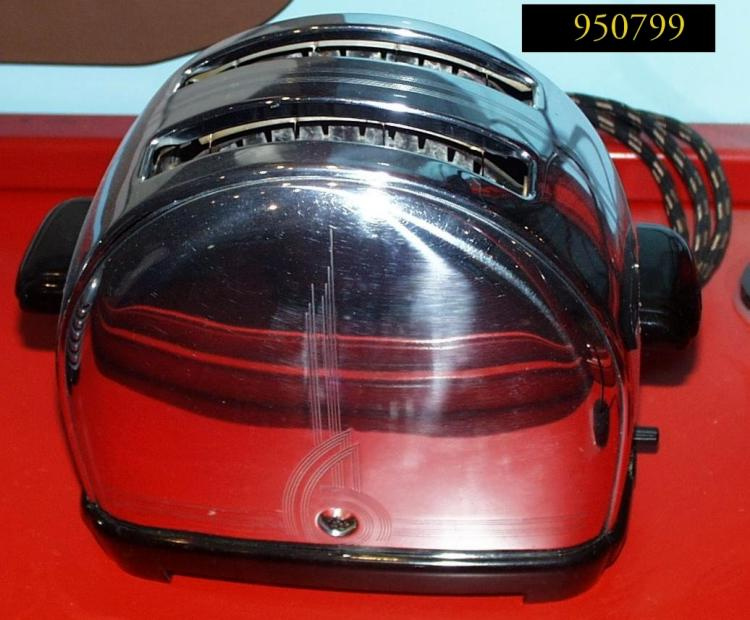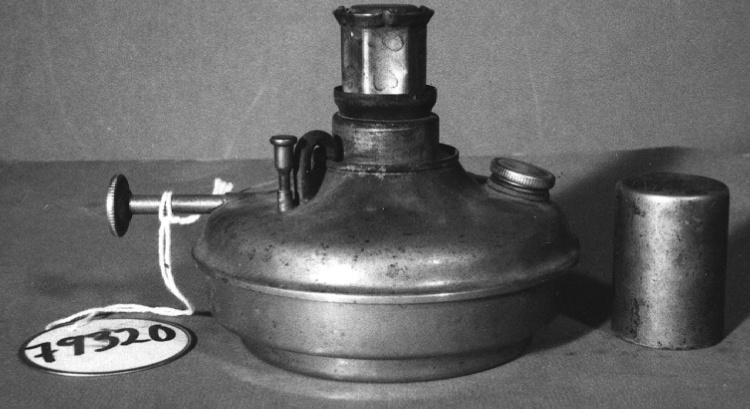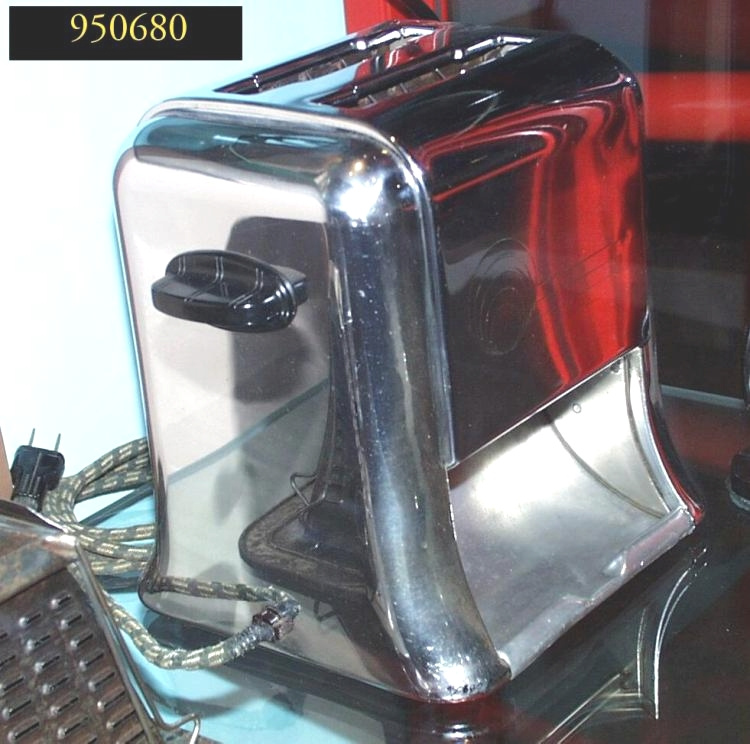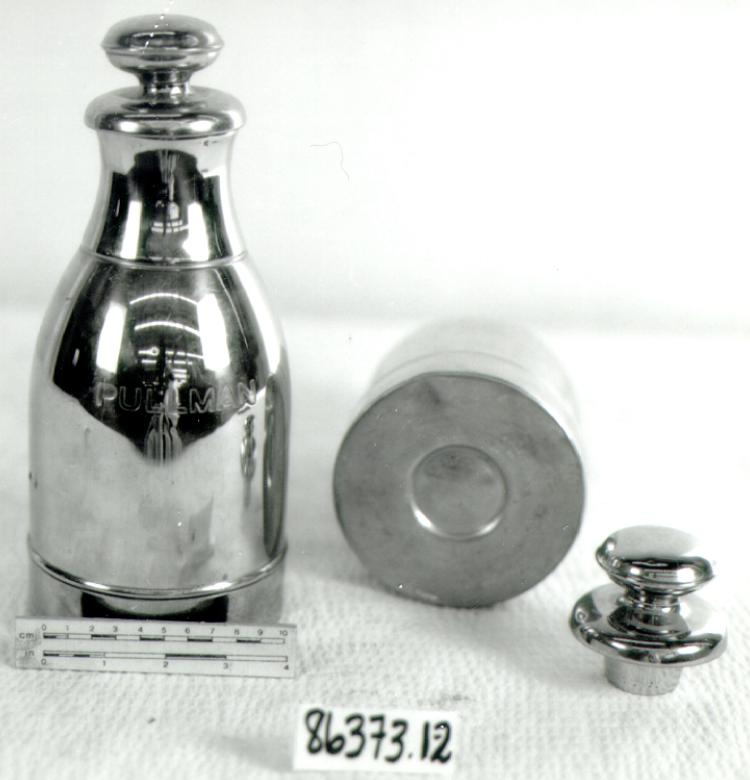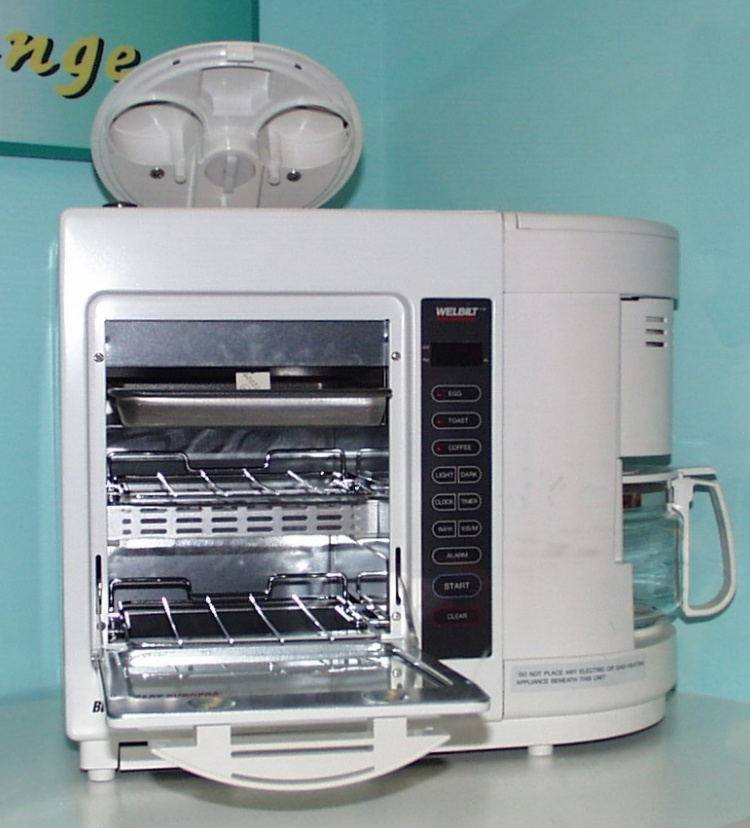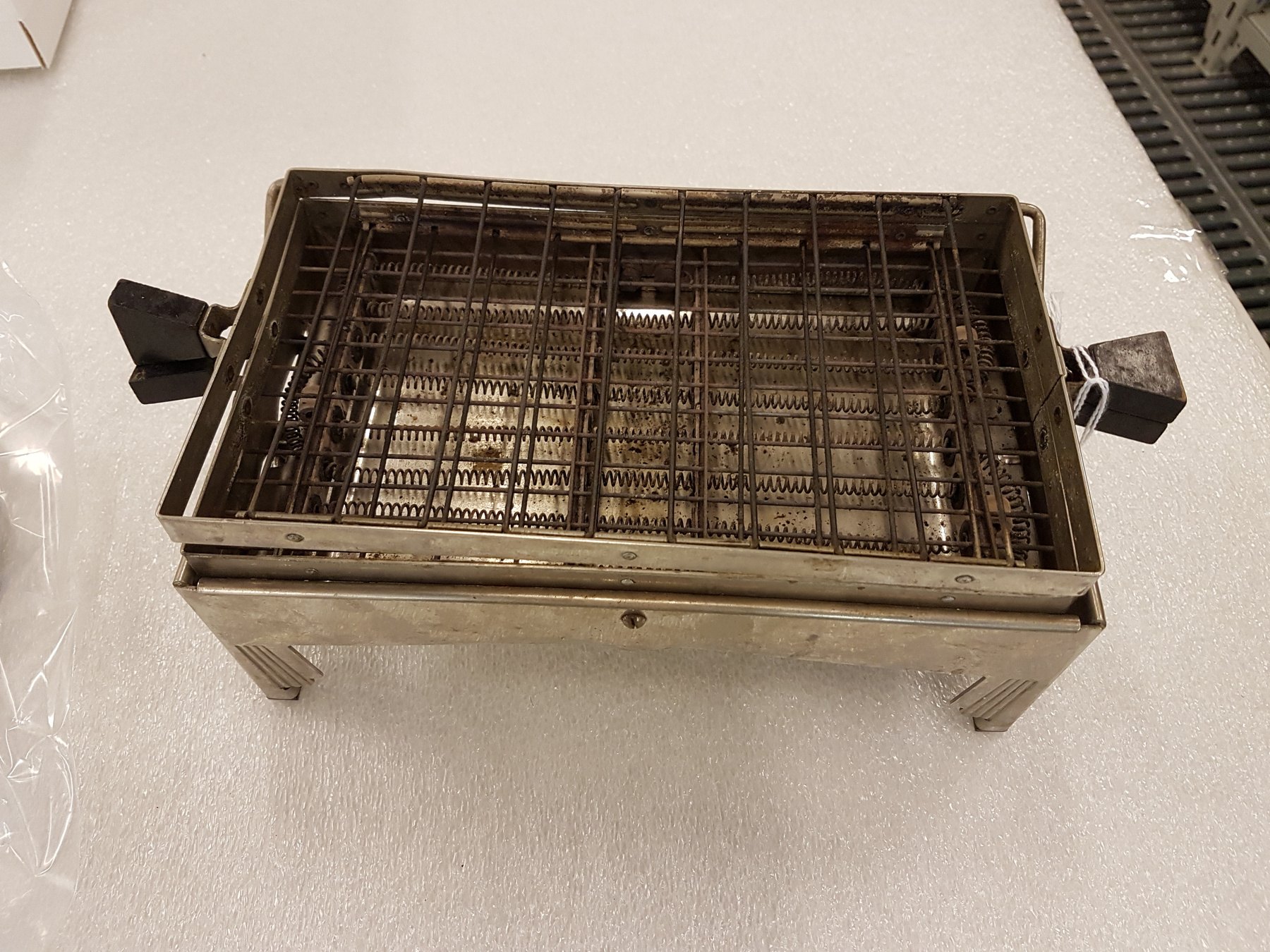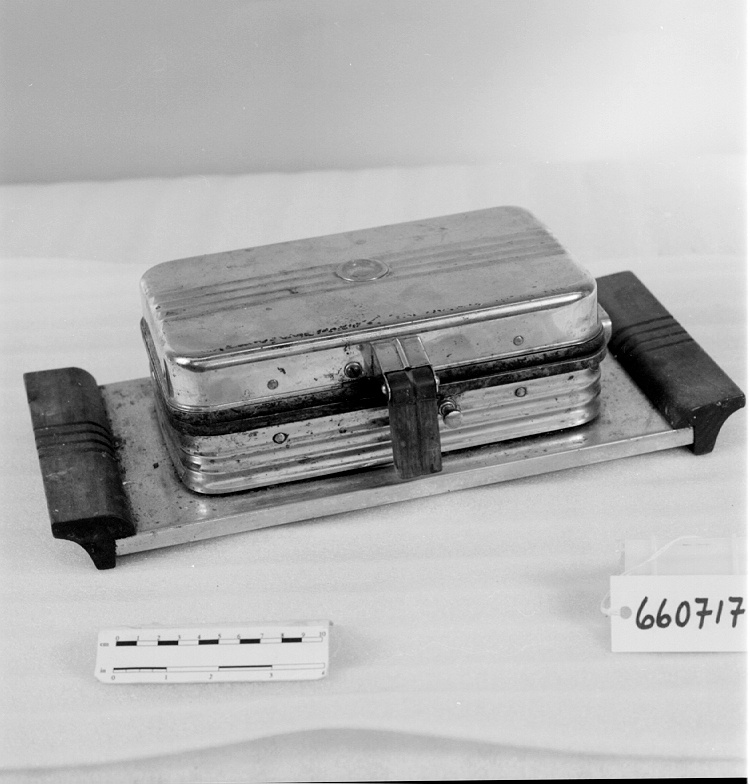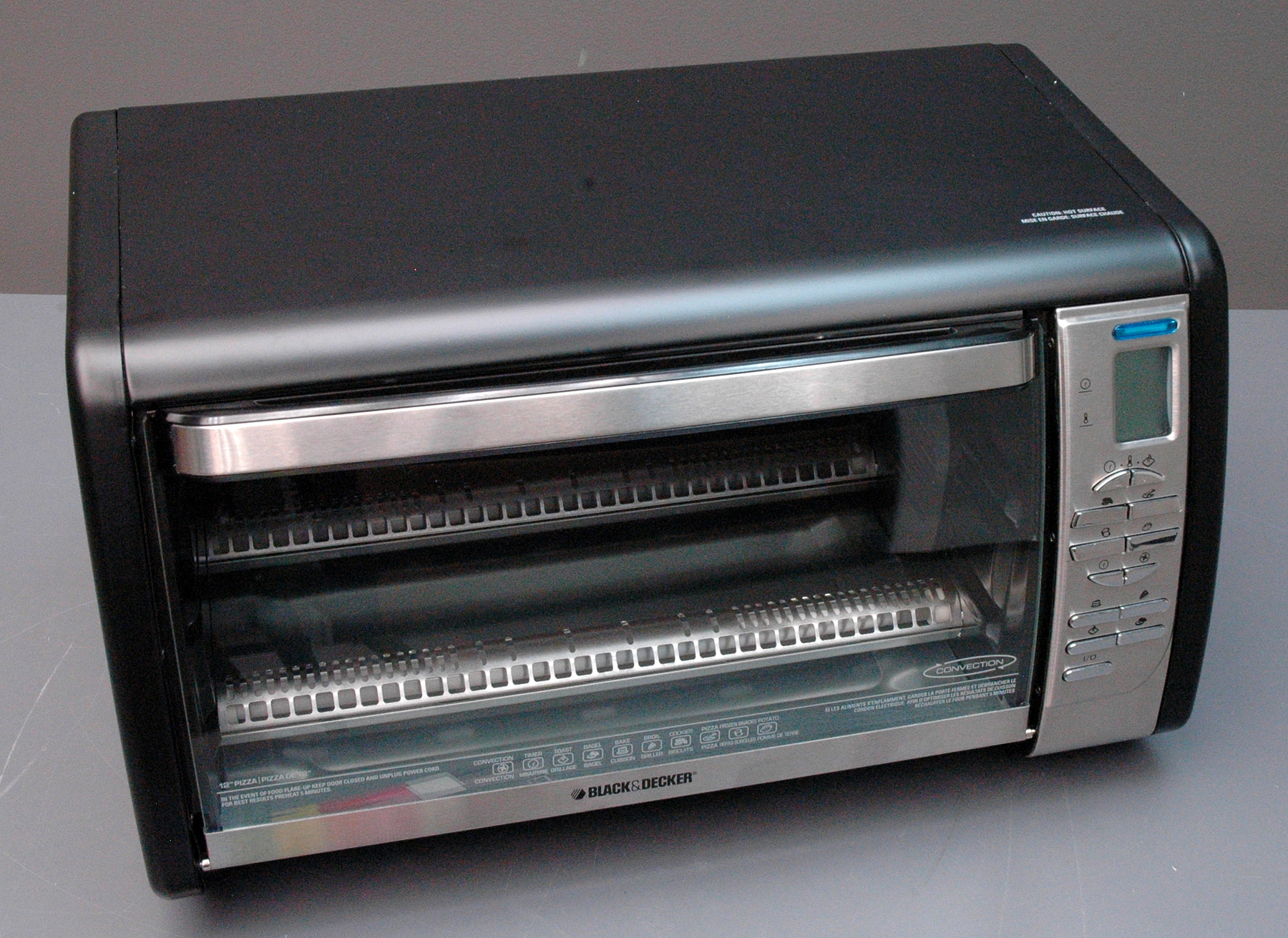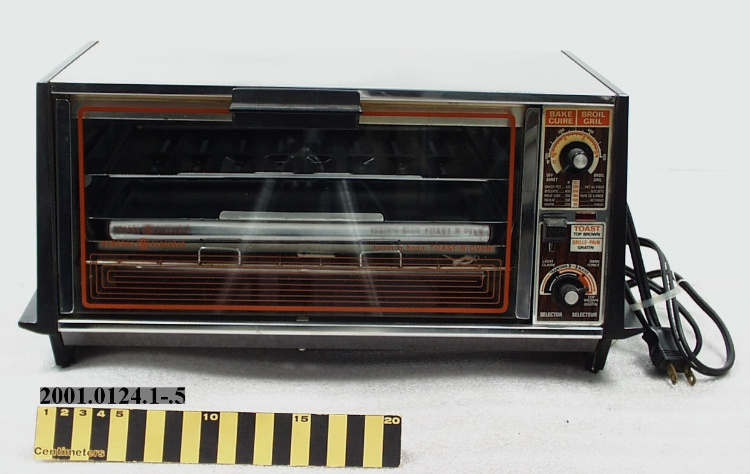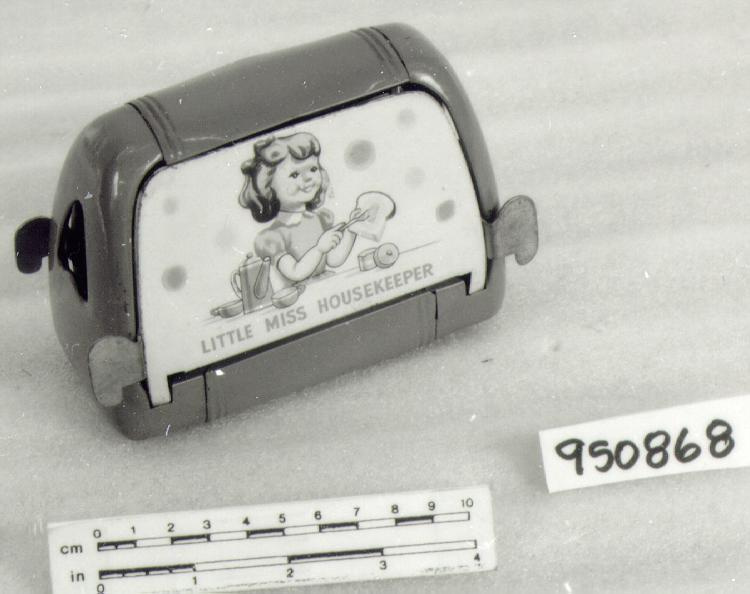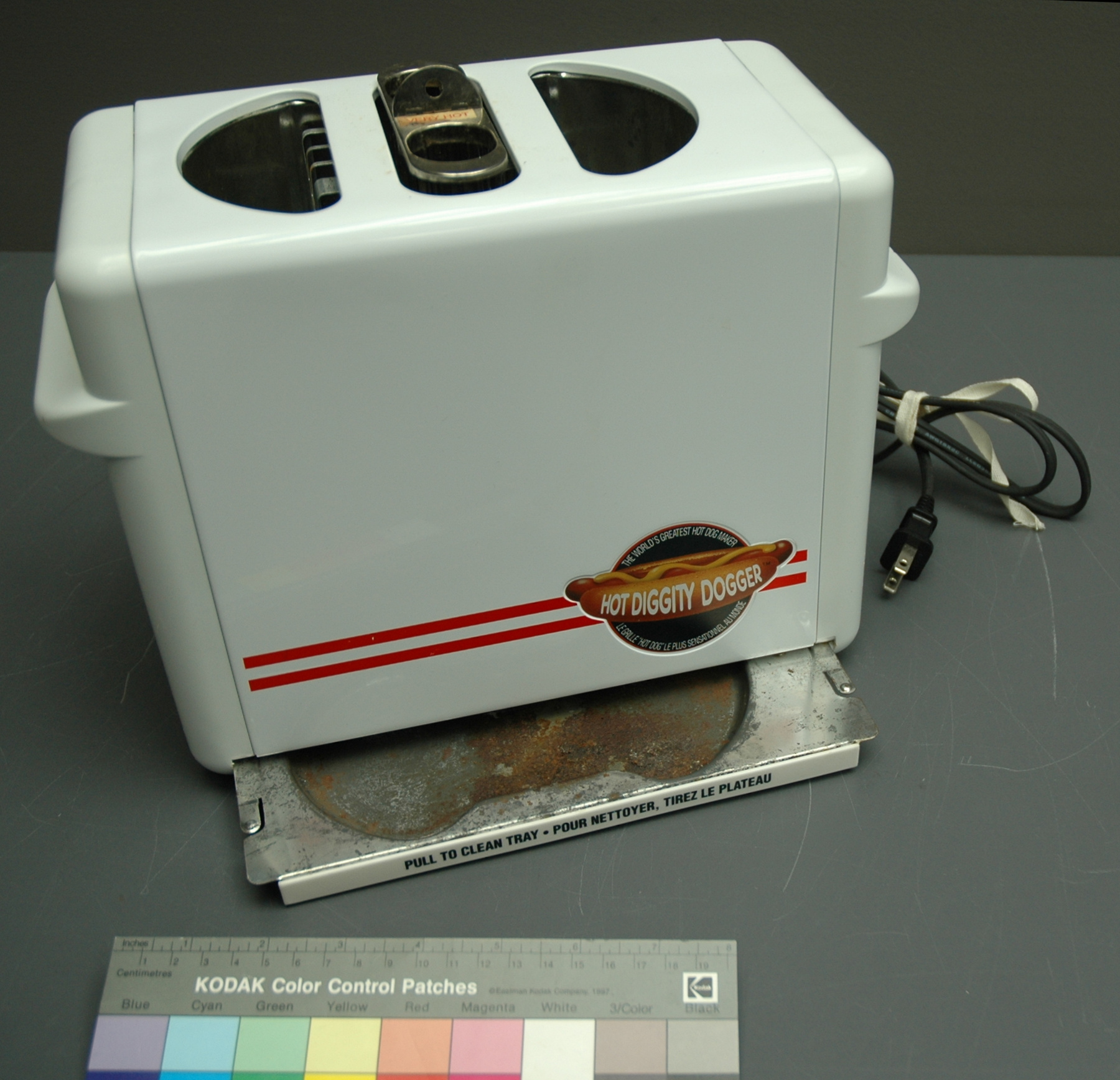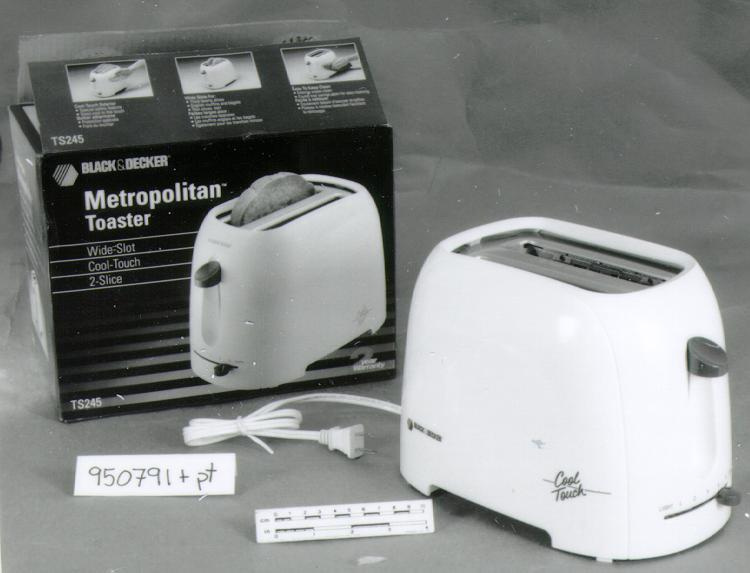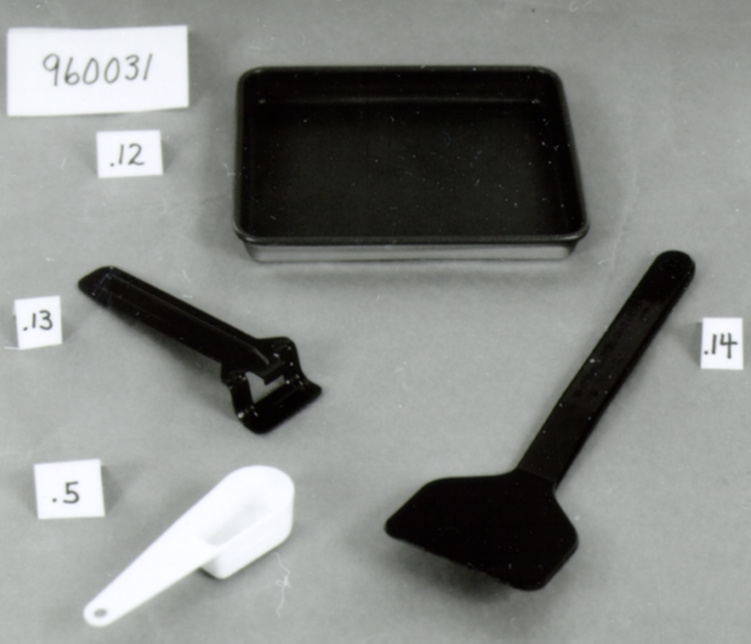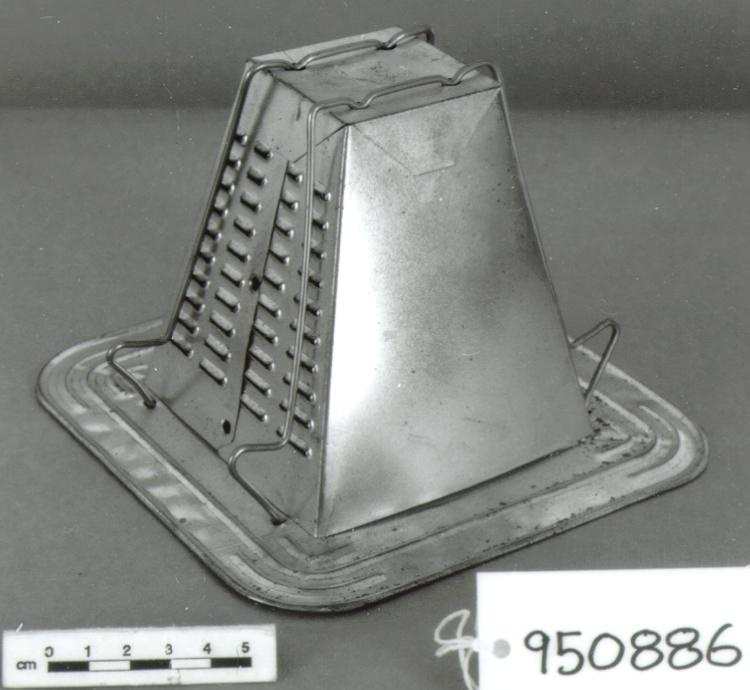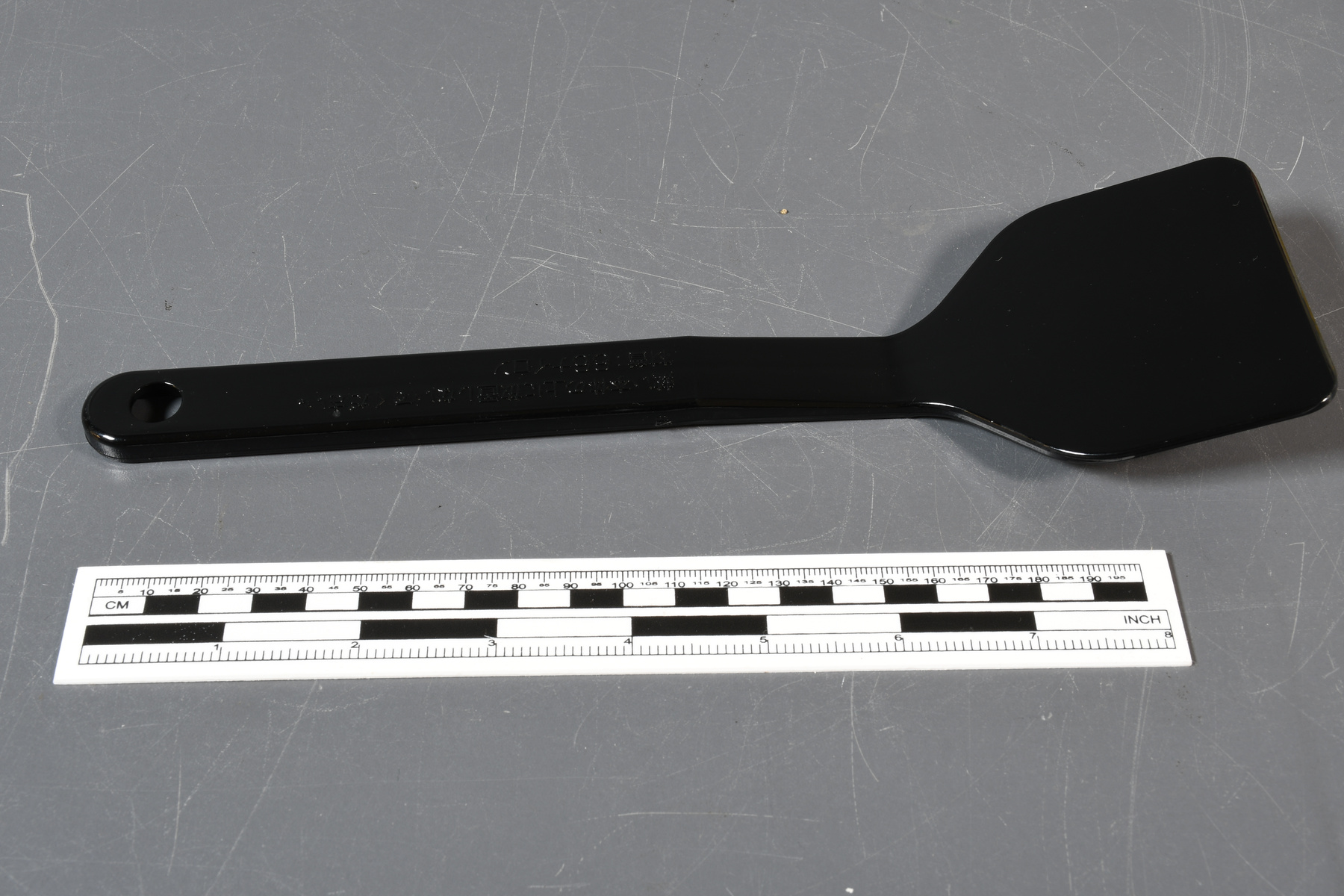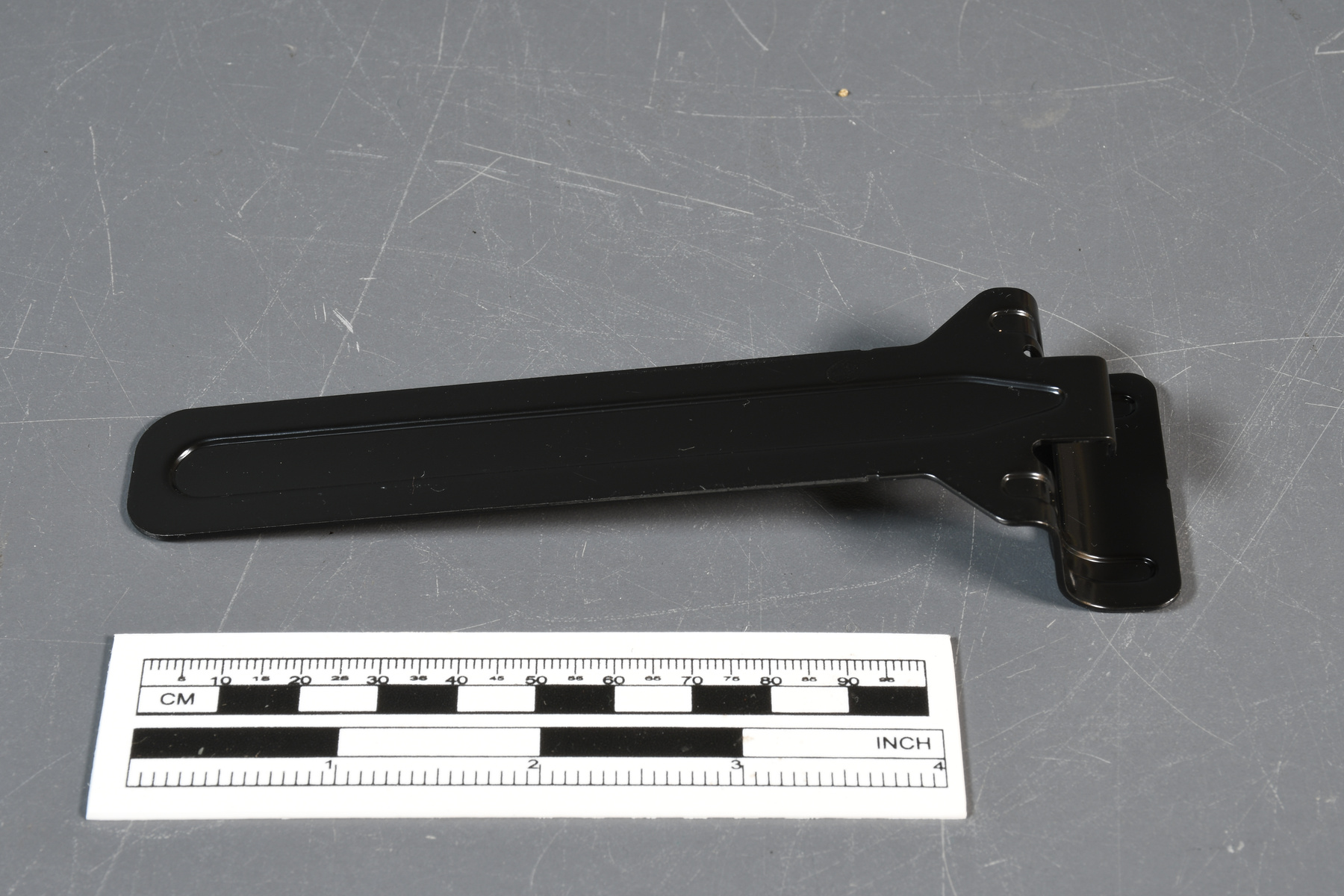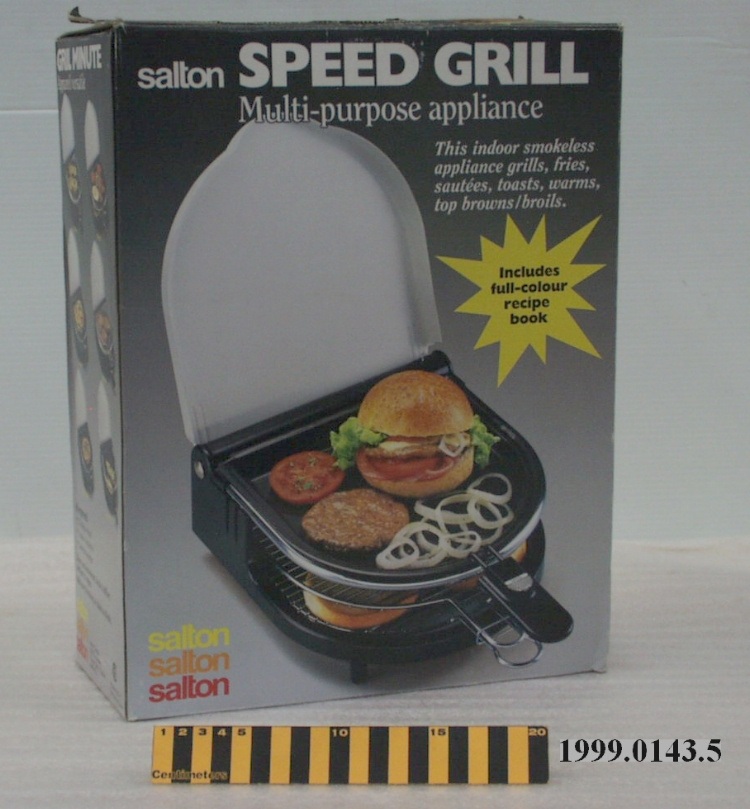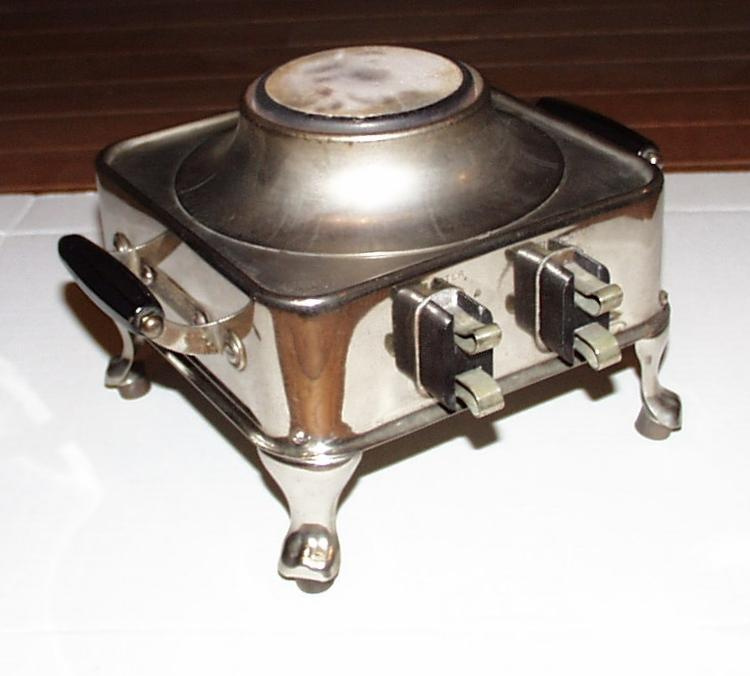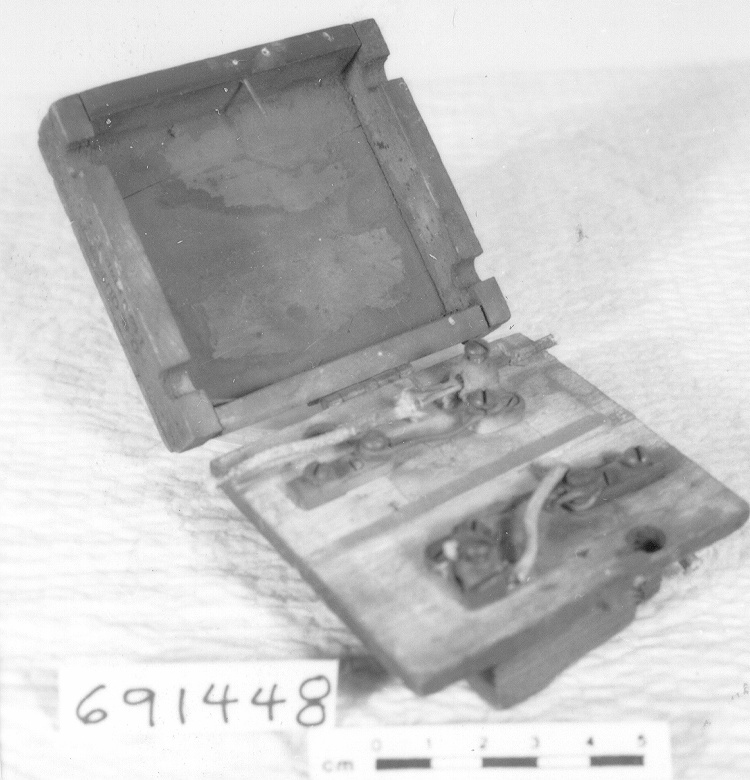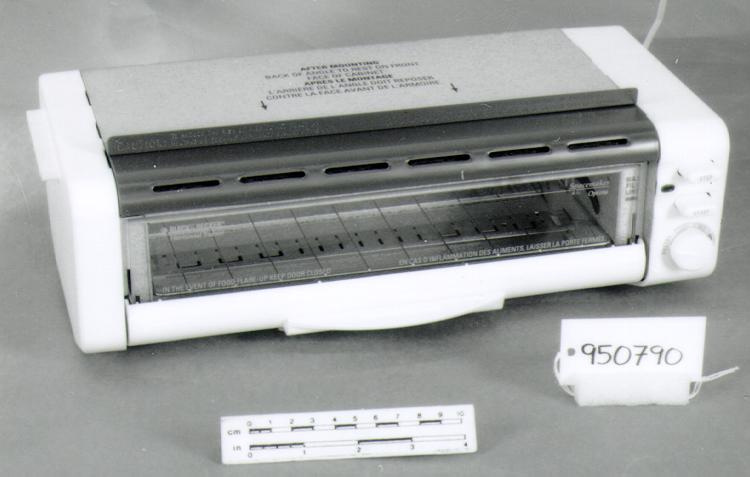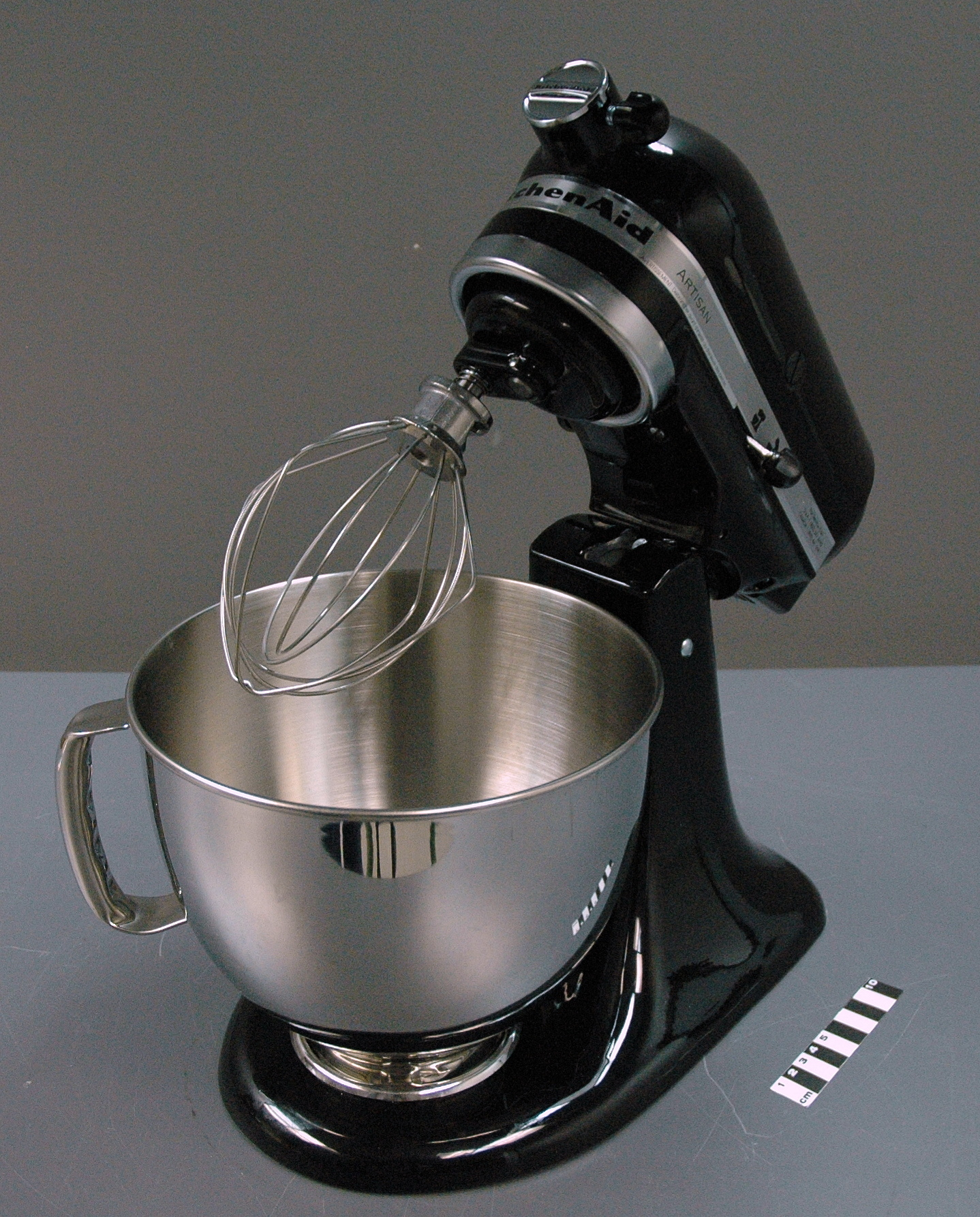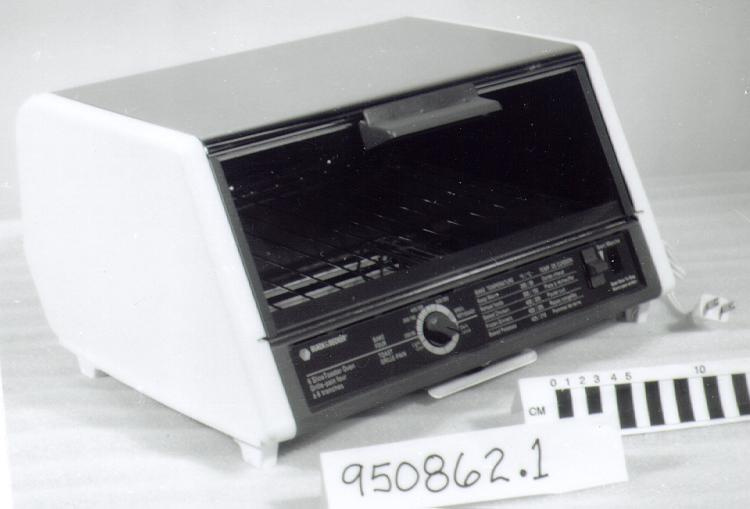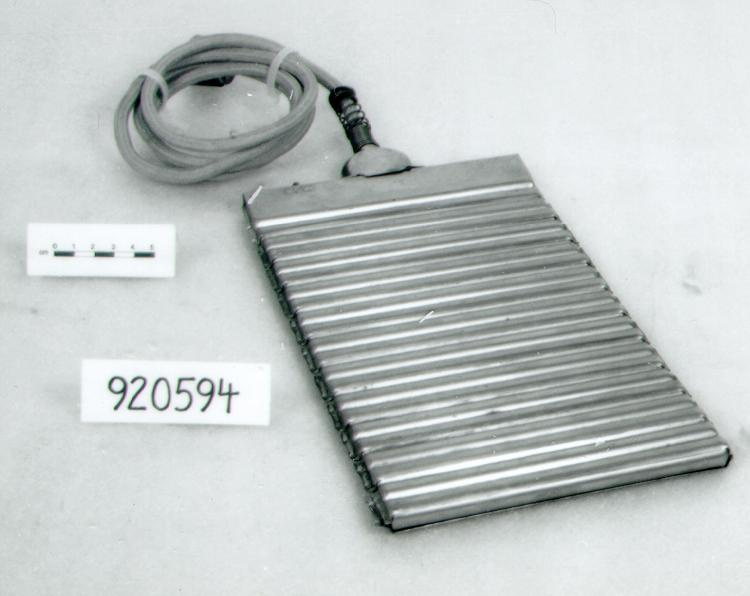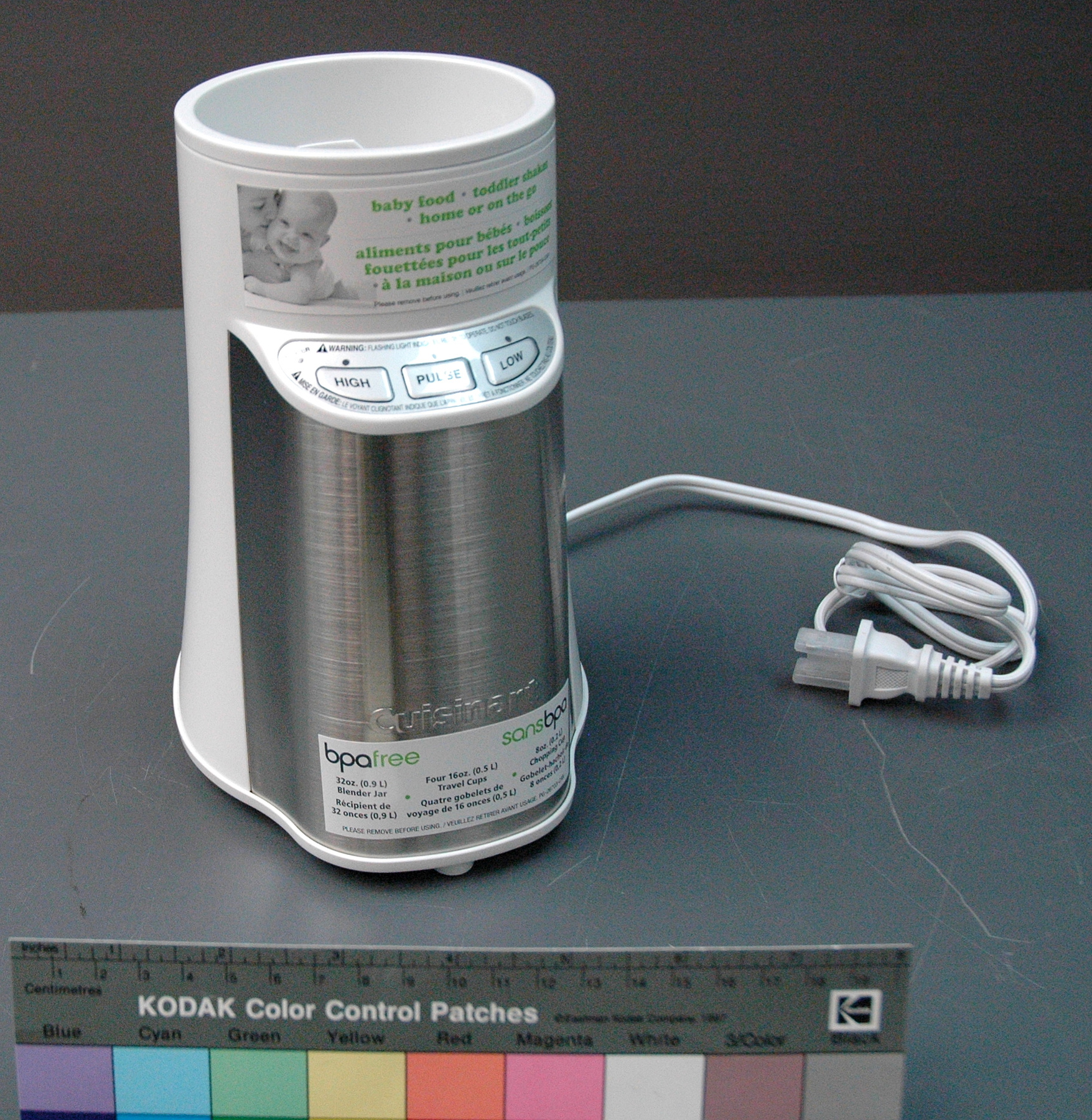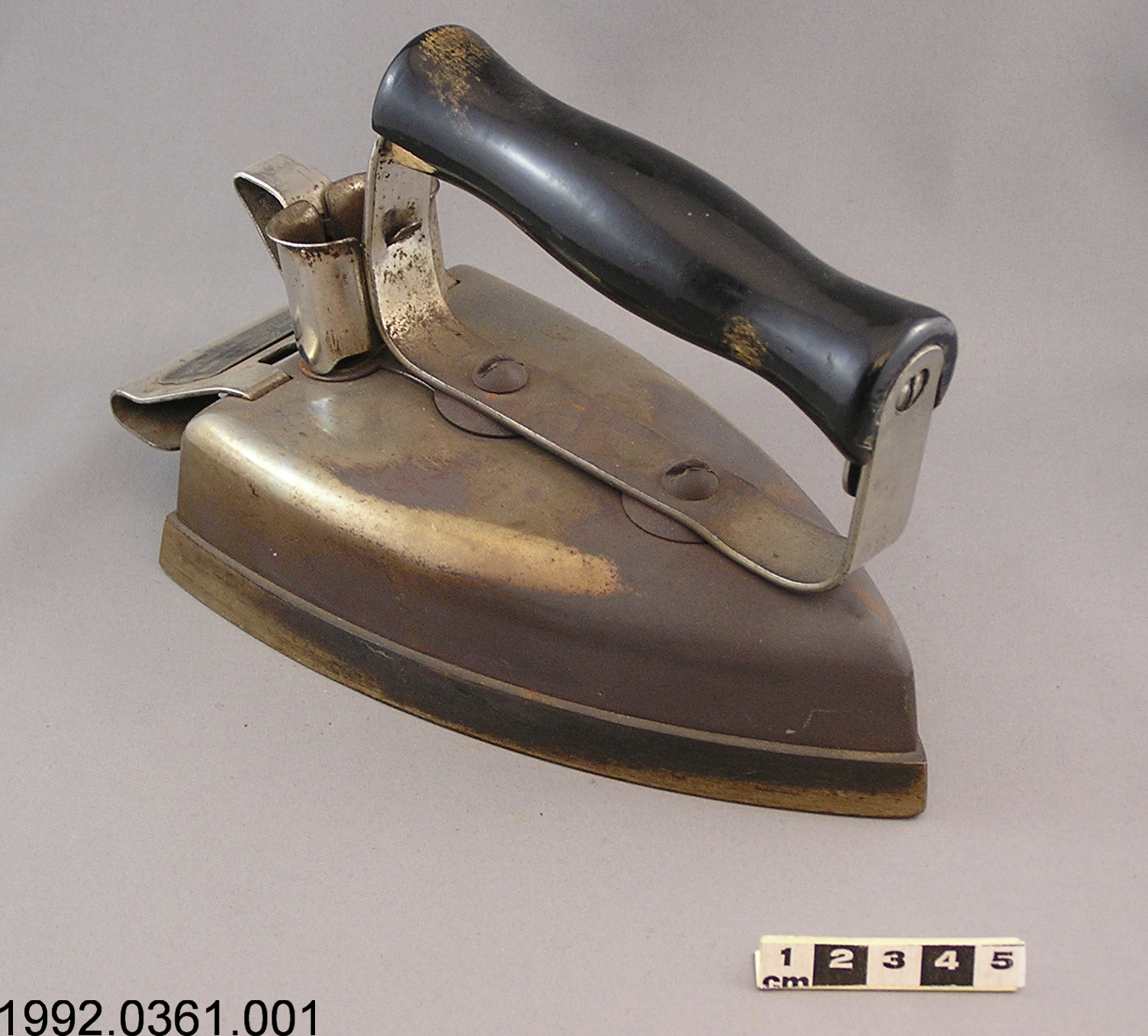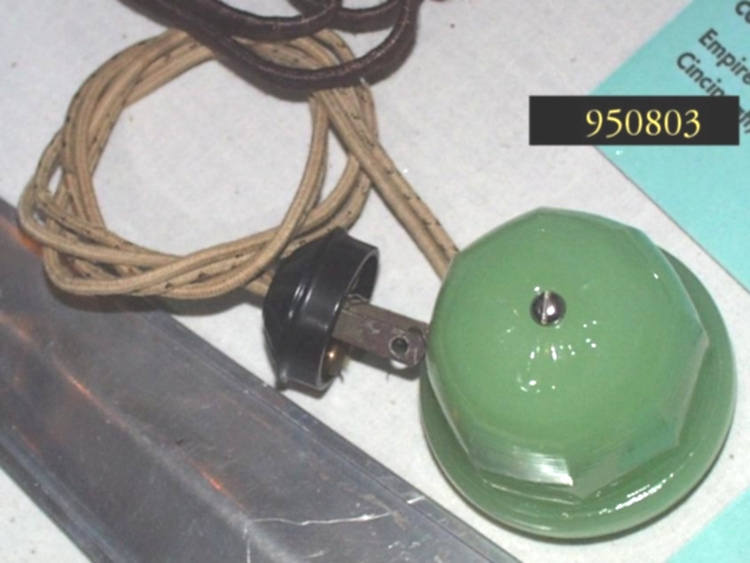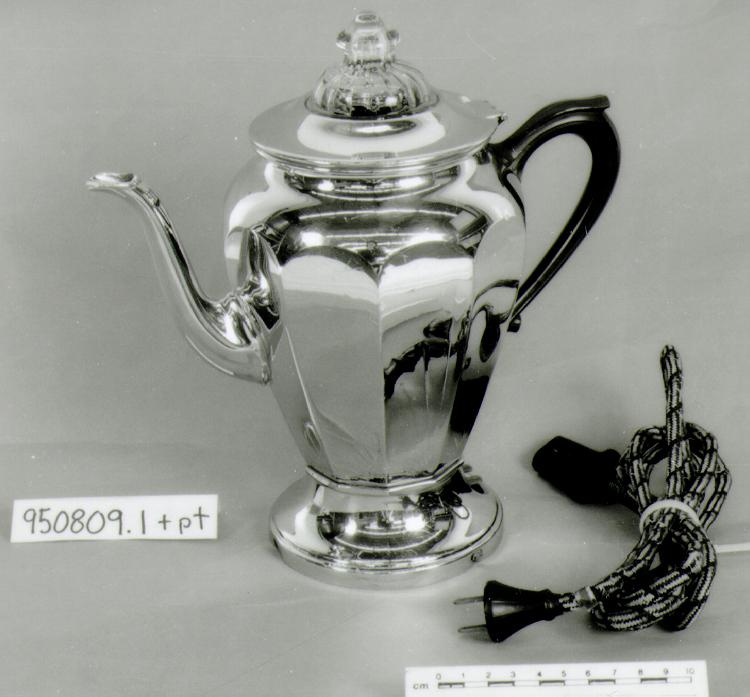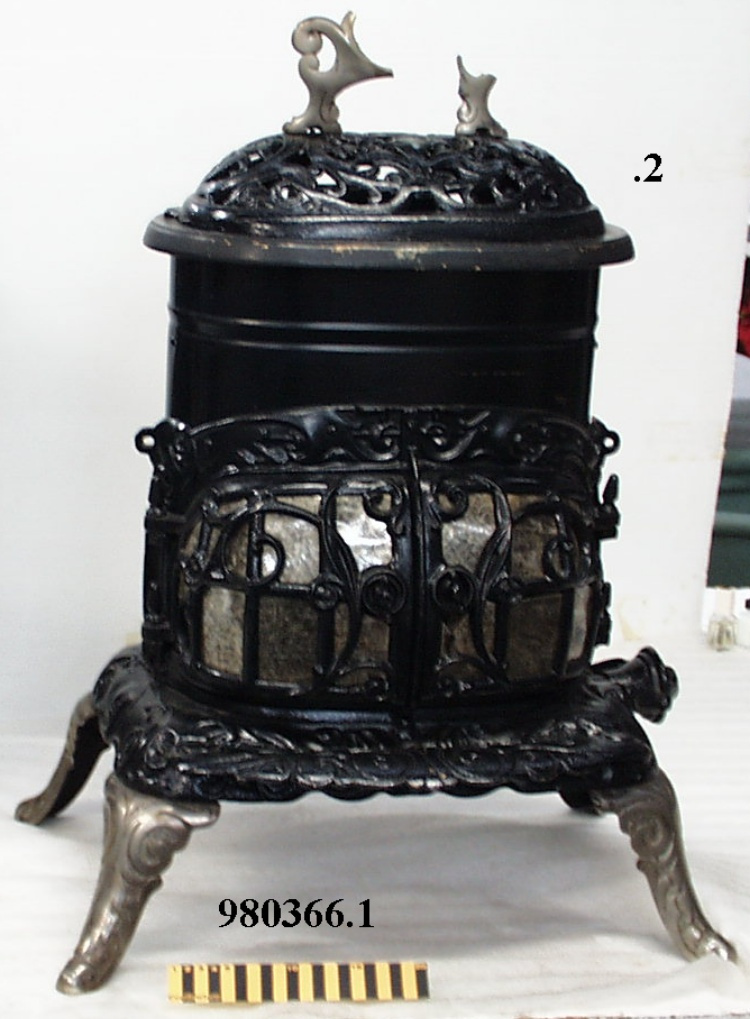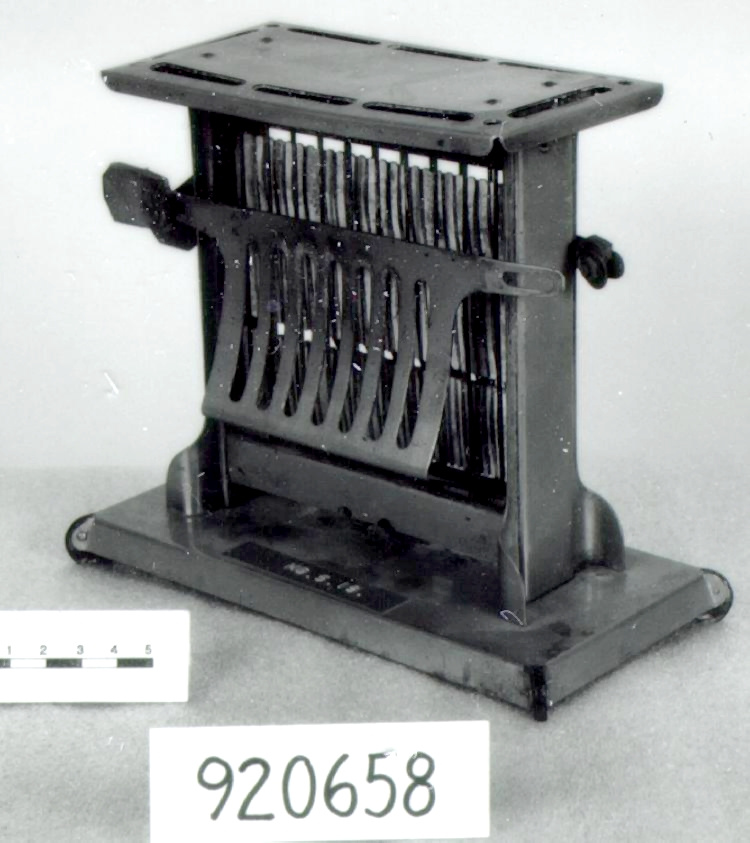Grille-pain
Utiliser cette image
Puis-je réutiliser cette image sans autorisation? Oui
Les images sur le portail de la collection d’Ingenium ont la licence Creative Commons suivante :
Copyright Ingenium / CC BY-NC-ND (Attribution-NonCommercial 4.0 International (CC BY-NC 4.0)
ATTRIBUER CETTE IMAGE
Ingenium,
1992.0658.001
Permalien:
Ingenium diffuse cette image sous le cadre de licence Creative Commons et encourage son téléchargement et sa réutilisation à des fins non commerciales. Veuillez mentionner Ingenium et citer le numéro de l’artefact.
TÉLÉCHARGER L’IMAGEACHETER CETTE IMAGE
Cette image peut être utilisée gratuitement pour des fins non commerciales.
Pour un usage commercial, veuillez consulter nos frais de reproduction et communiquer avec nous pour acheter l’image.
- TYPE D’OBJET
- ELECTRIC/SIDE PANEL
- DATE
- 1915
- NUMÉRO DE L’ARTEFACT
- 1992.0658.001
- FABRICANT
- LANDERS FRARY & CLARK
- MODÈLE
- UNIVERSAL E946
- EMPLACEMENT
- New Britain, Connecticut, United States of America
Plus d’information
Renseignements généraux
- Nº de série
- S/O
- Nº de partie
- 1
- Nombre total de parties
- 1
- Ou
- S/O
- Brevets
- S/O
- Description générale
- NICKEL PLATED PRESSED METAL BASE, HOUSING & SIDE PANELS/ WIRE ELEMENTS WRAPPED AROUND SHEET MICA CORES/ LEATHER TAB HANDLES/ PRESSED COMPOSITION MATERIAL? FEET
Dimensions
Remarque : Cette information reflète la taille générale pour l’entreposage et ne représente pas nécessairement les véritables dimensions de l’objet.
- Longueur
- 21,2 cm
- Largeur
- 9,8 cm
- Hauteur
- 16,8 cm
- Épaisseur
- S/O
- Poids
- S/O
- Diamètre
- S/O
- Volume
- S/O
Lexique
- Groupe
- Technologie domestique
- Catégorie
- Traitement de nourriture
- Sous-catégorie
- S/O
Fabricant
- Ou
- LANDERS
- Pays
- United States of America
- État/province
- Connecticut
- Ville
- New Britain
Contexte
- Pays
- Inconnu
- État/province
- Inconnu
- Période
- Inconnu
- Canada
-
Around the time when this toaster was produced, electricity was not yet commonly found within Canadian homes. Toasters and other electrical appliances were typically used in commercial settings, such as restaurants. Electrification of homes started initially through the introduction of lighting, leading to the development of some toaster cords that plugged into lightbulb sockets (Ref.1). In 1917, the two-prong system for electrical plugs was established and standardized across North America (Ref.1), and by the 1920s it became more affordable to bring electricity into the home. Between 1941-1951, the percentage of homes with electricity increased significantly, from 69.1% of homes, to 87.8%, with higher percentages in urban regions of the country (Ref. 2). To encourage further use of electricity in homes during low-peak hours, electric companies in Canada began to encourage use of electrical appliances. These companies targeted women in their marketing, promoting the benefits of appliances to reduce workload in the kitchen. Showrooms were set up across Canada by various electric manufacturers, inviting women to view various electrical appliances (Ref.1). As Canadians were introduced to the benefits of electricity in the kitchen, there was initially higher uptake of small electric appliances, such as toasters and irons, than the larger appliances. Between 1952-1960, the total number of toasters that were manufactured in Canada increased from 198,200 to 278,567 toasters total, or a total value of $1.2 million to $2.6 million (Ref.3). By 1931, 40% of homes across Canada owned a toaster (Ref.2). - Fonction
-
To toast bread on one side, other side is toasted by turning the bread manually. Can toast up to two slices of bread at a time. - Technique
-
The design of the toaster is simple and functional in nature, made up of bent sheet metal to create the frame. The company Landers Frary & Clark created a line of products under the Universal label, marketing their products as approachable and for everyday (Ref.4). A wire is wrapped around mica sheets to create a heating element for the toast, an approach that is used in the design of toaster components to this day. The toaster requires that the user attends to the appliance and turns the toast by hand to ensure even toasting on both sides. Due to human error however, this often led to burnt toast. This design flaw eventually led to the development of the pop-up toaster in 1919 (Ref.5). - Notes sur la région
-
Inconnu
Détails
- Marques
- MFR'S MARKS INCISED ON UNDERSIDE OF BASE READ: 'PATENTS/ DEC.9, 1913.OCT. 5, 1915/ GREAT BRITAIN/ 15961-191222258-1912/ CANADA JUNE 1, 1915/ Bte S.G. du G. No. 446548/ UNIVERSAL/ MADE BY/ LANDERS FRARY & CLARK/ NEW BRITAIN, CONN, U.S.A./ VOLTS 110 No. E946 AMPS 3.1/ LMP/ PAT. FEB. 6, 1906'
- Manque
- LEATHER TAB ON SIDE PANEL/ ELECTRICAL CORD From CA of 03/17/1994 by Tony Missio: Yes - missing cord
- Fini
- BASE, HOUSING & PANELS METAL WITH PLATED NICKEL FINISH/ ELEMENT CORES GRAY MICA/ TABS BROWN LEATHER/ FEET BLACK COMPOSITION MATERIAL?
- Décoration
- S/O
FAIRE RÉFÉRENCE À CET OBJET
Si vous souhaitez publier de l’information sur cet objet de collection, veuillez indiquer ce qui suit :
LANDERS FRARY & CLARK, Grille-pain, vers 1915, Numéro de l'artefact 1992.0658, Ingenium - Musées des sciences et de l'innovation du Canada, http://collections.ingeniumcanada.org/fr/id/1992.0658.001/
RÉTROACTION
Envoyer une question ou un commentaire sur cet artefact.
Plus comme ceci
